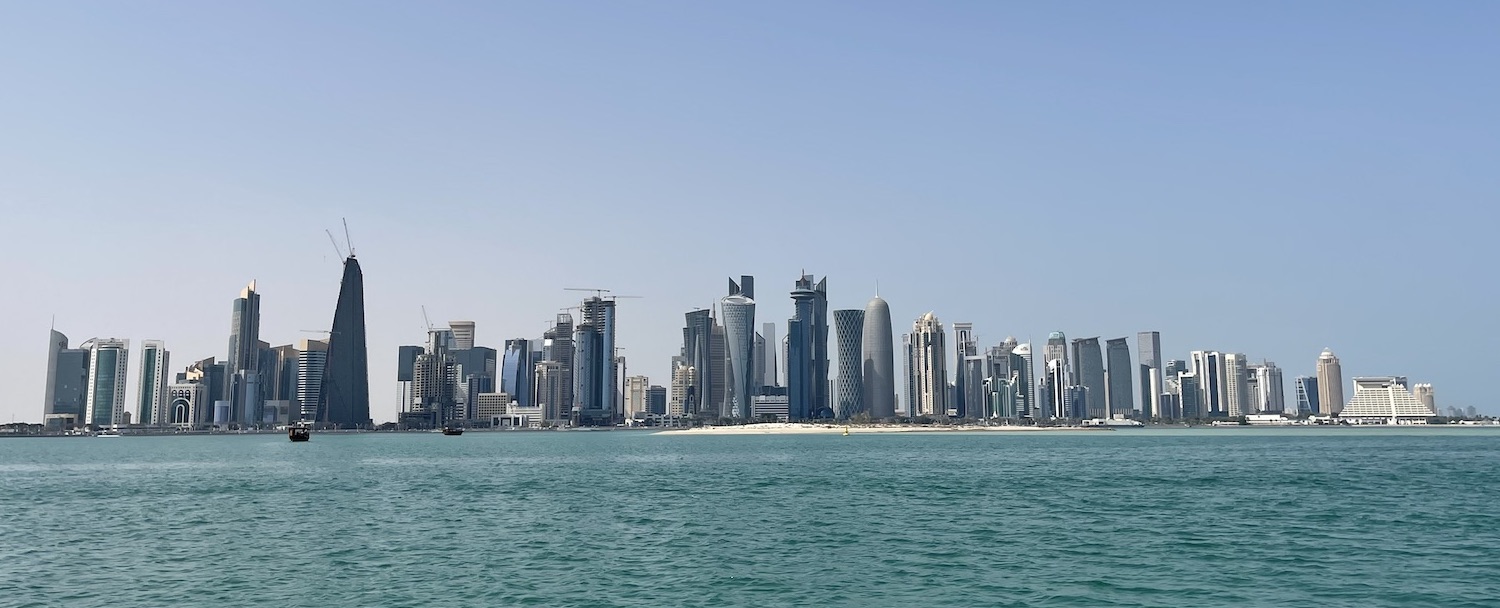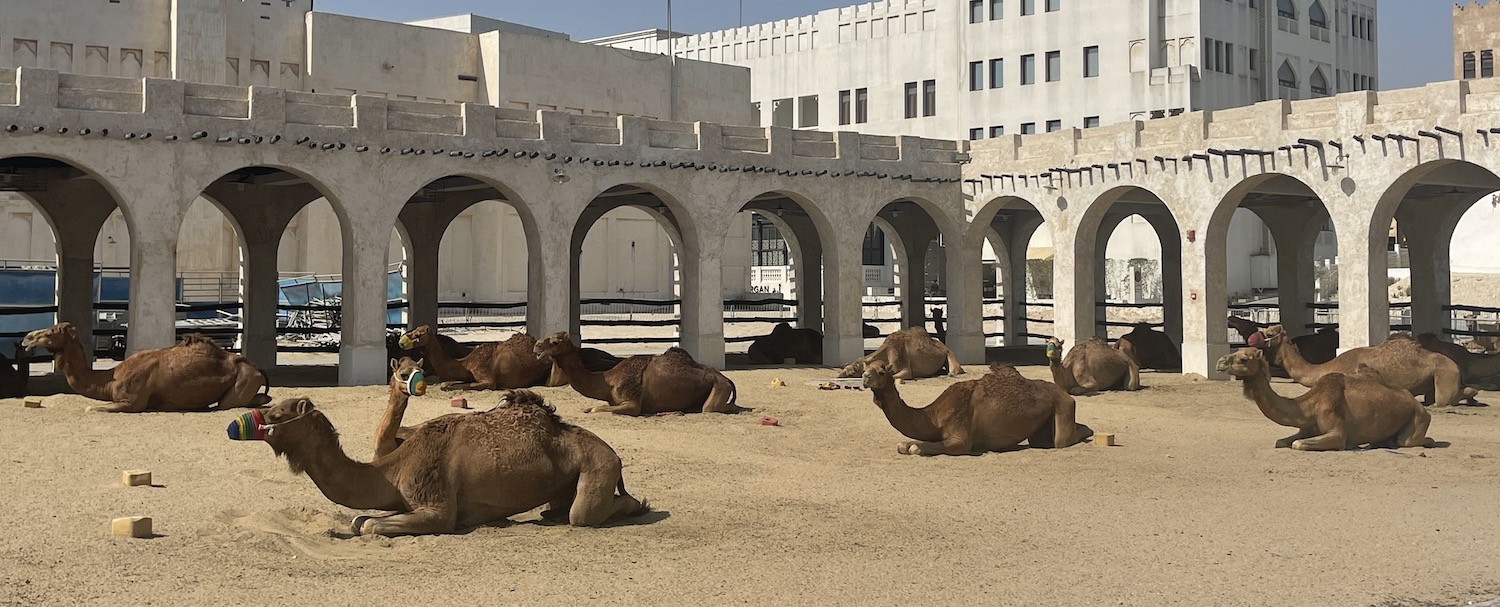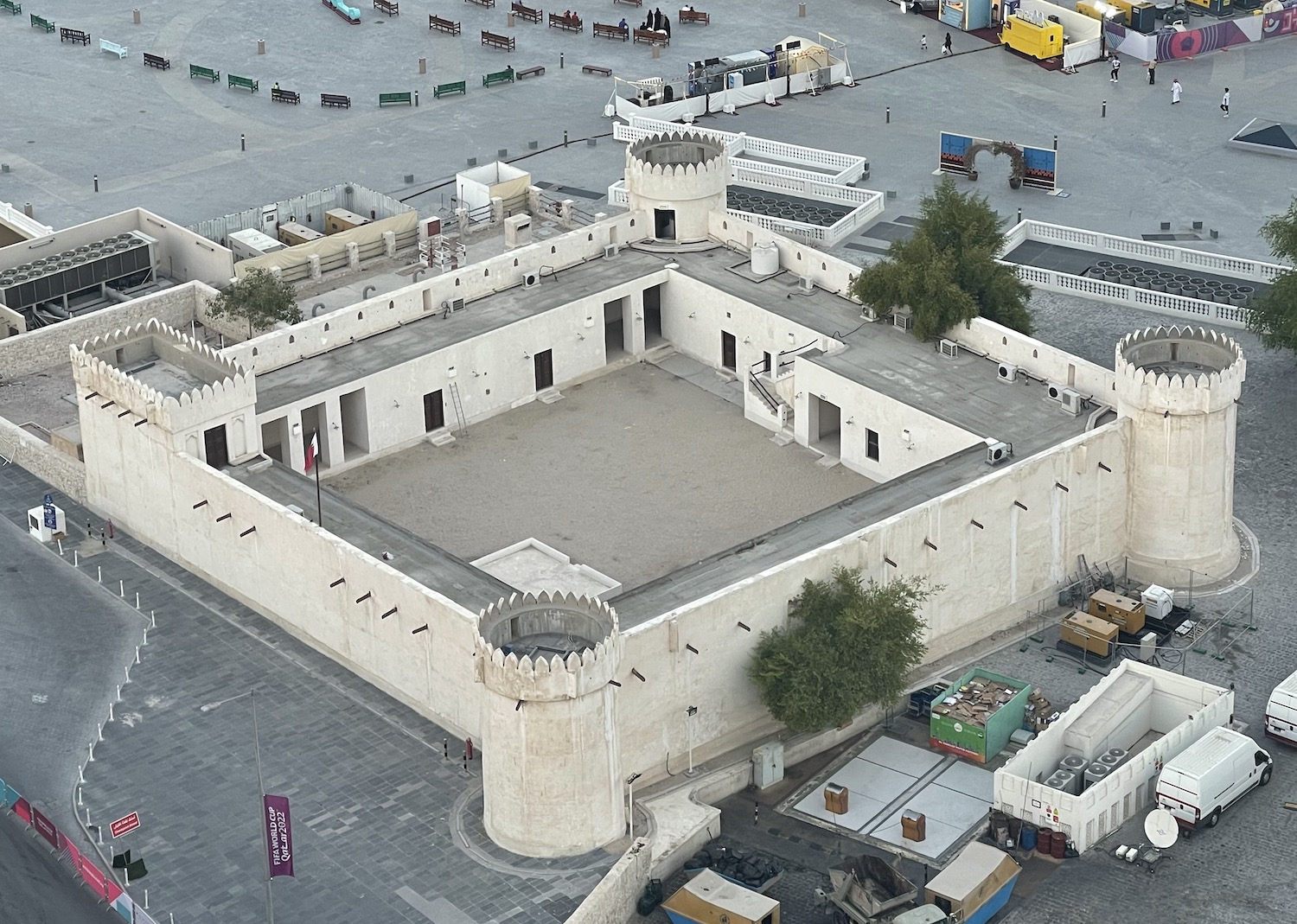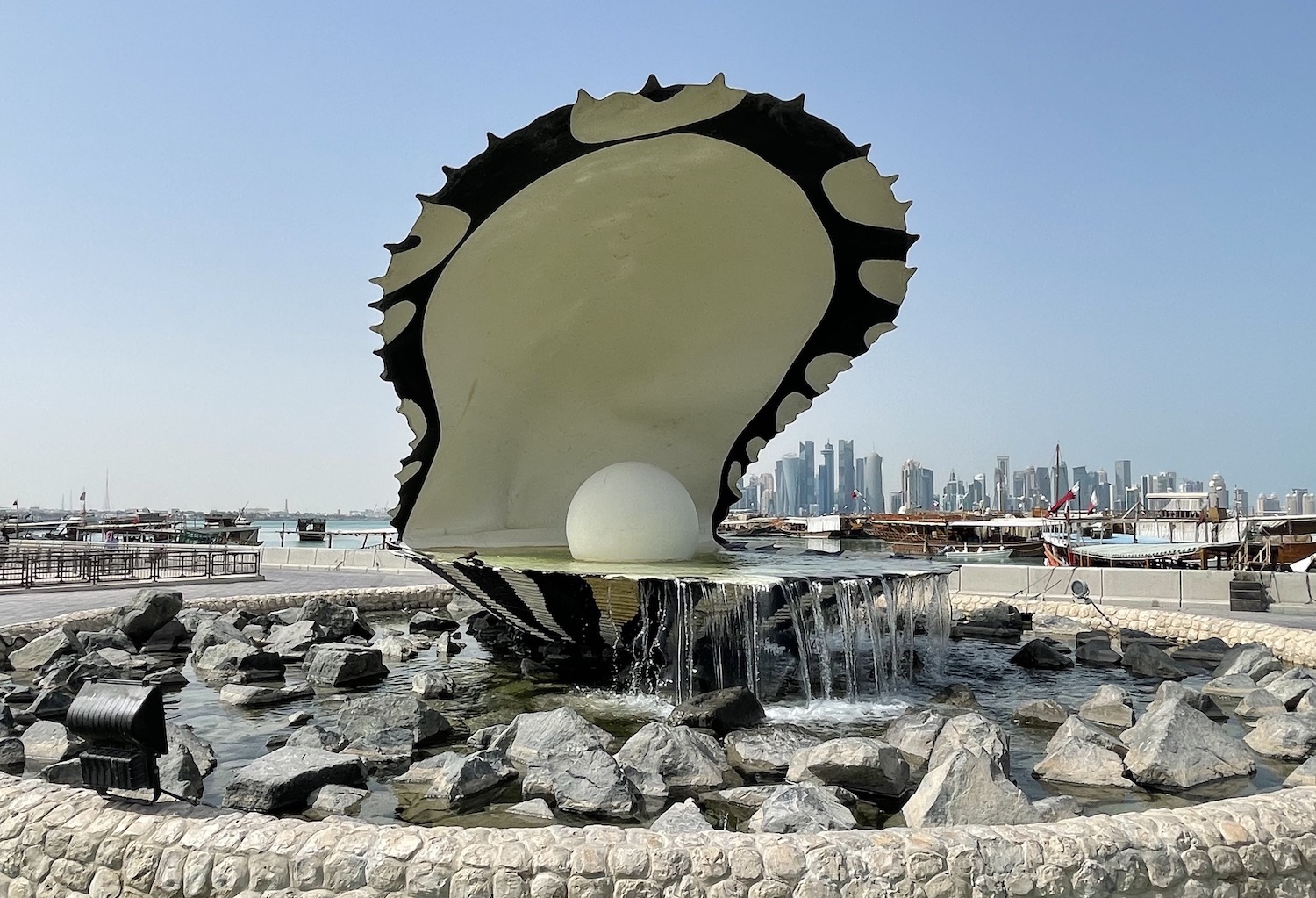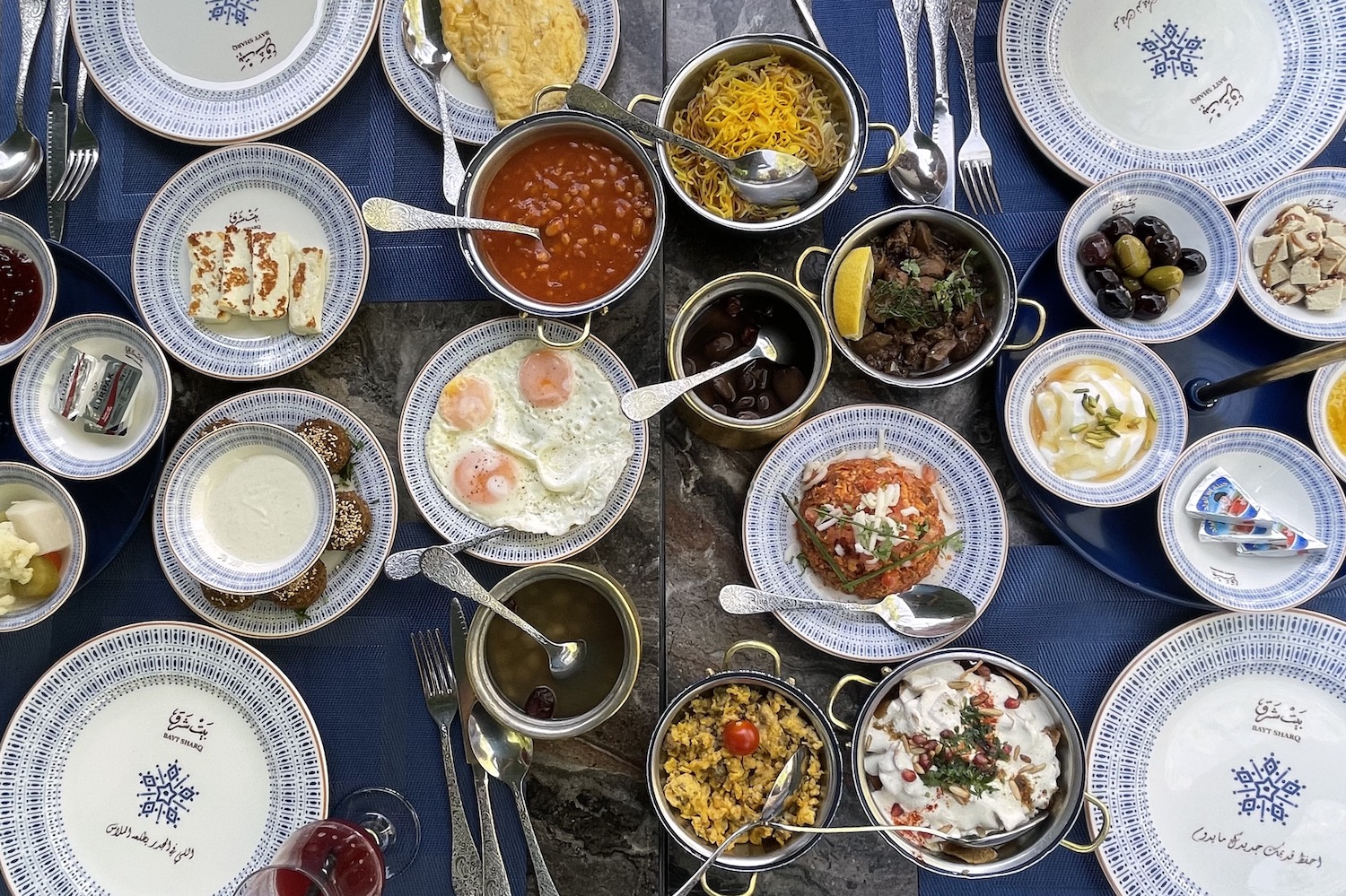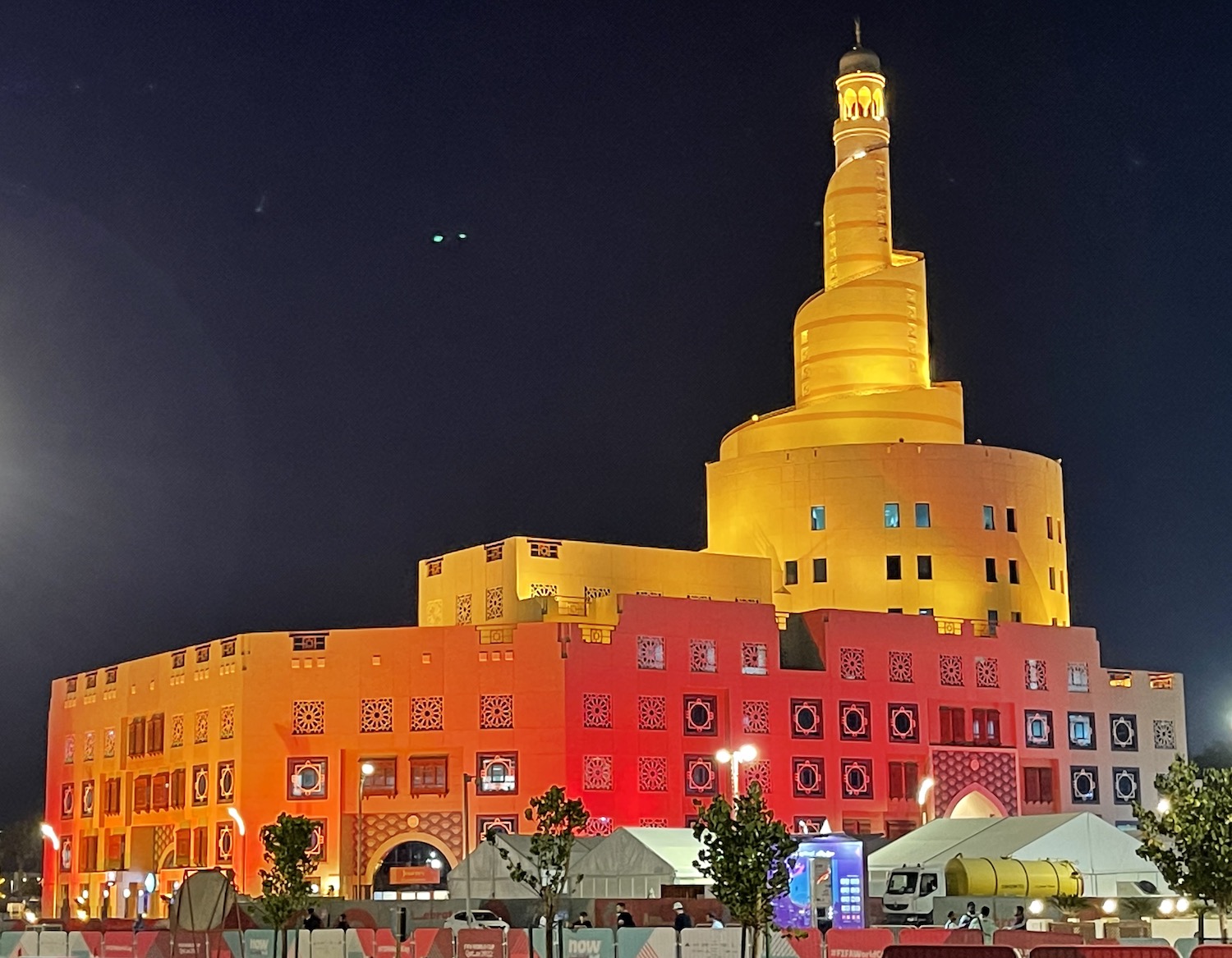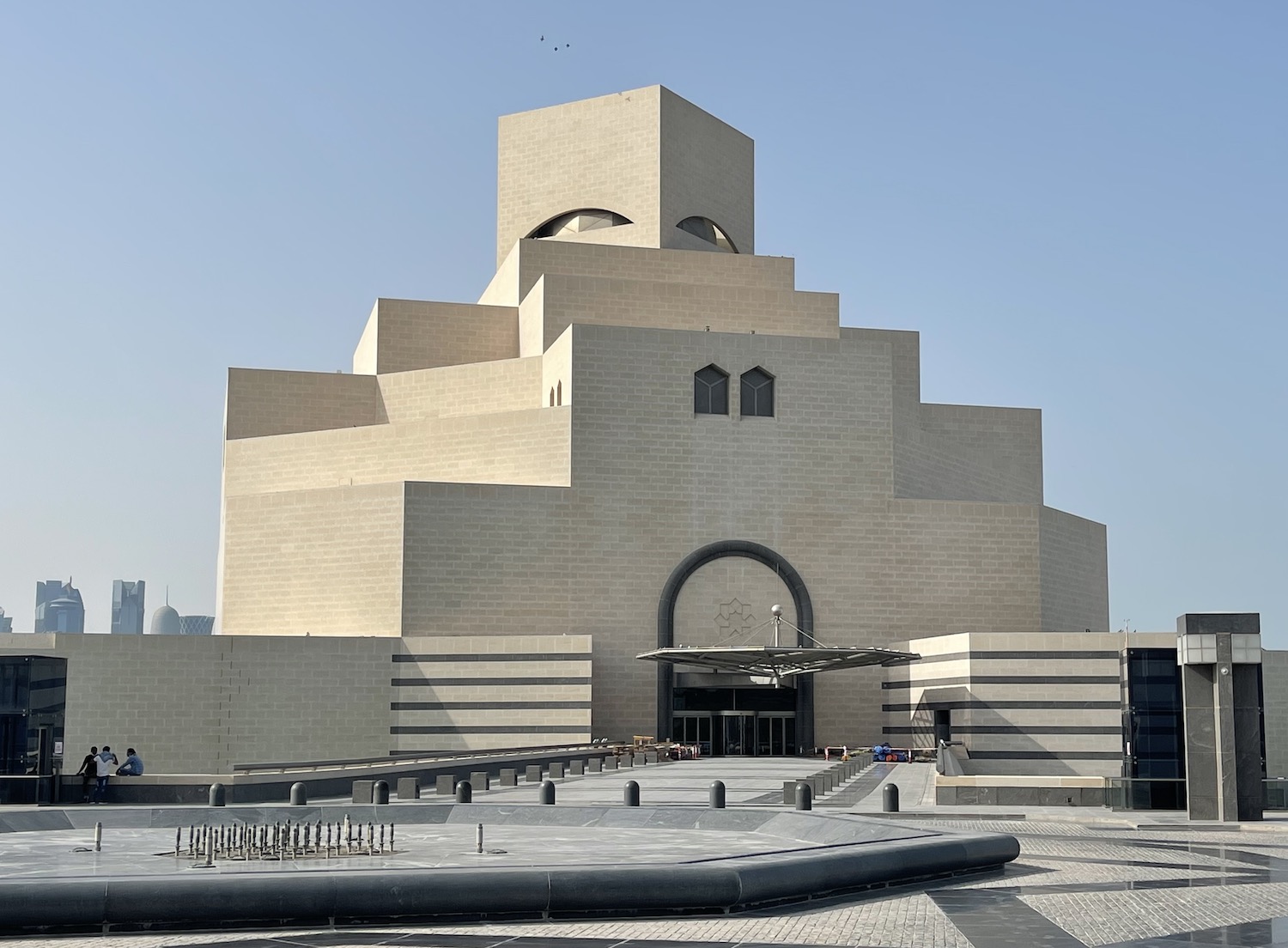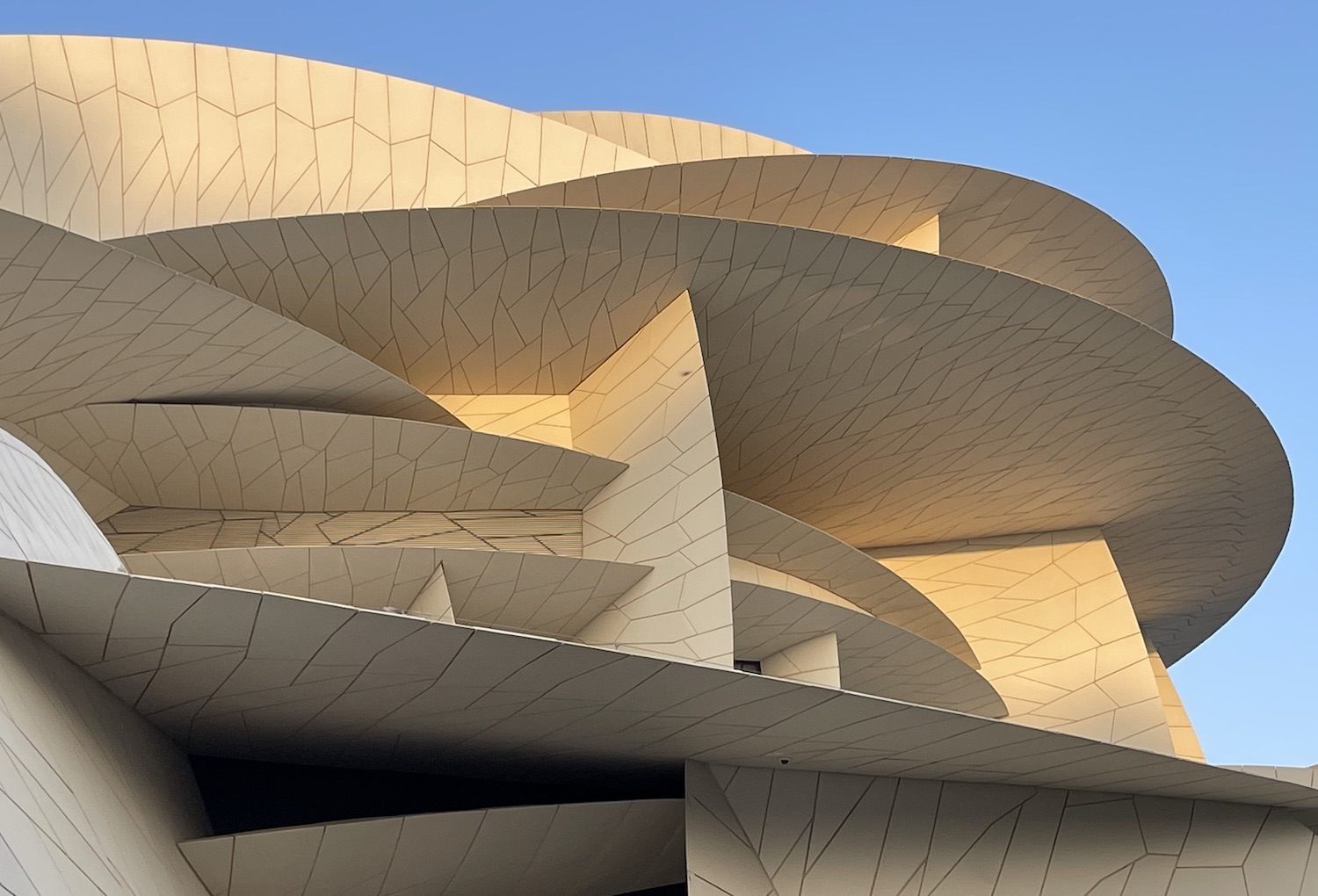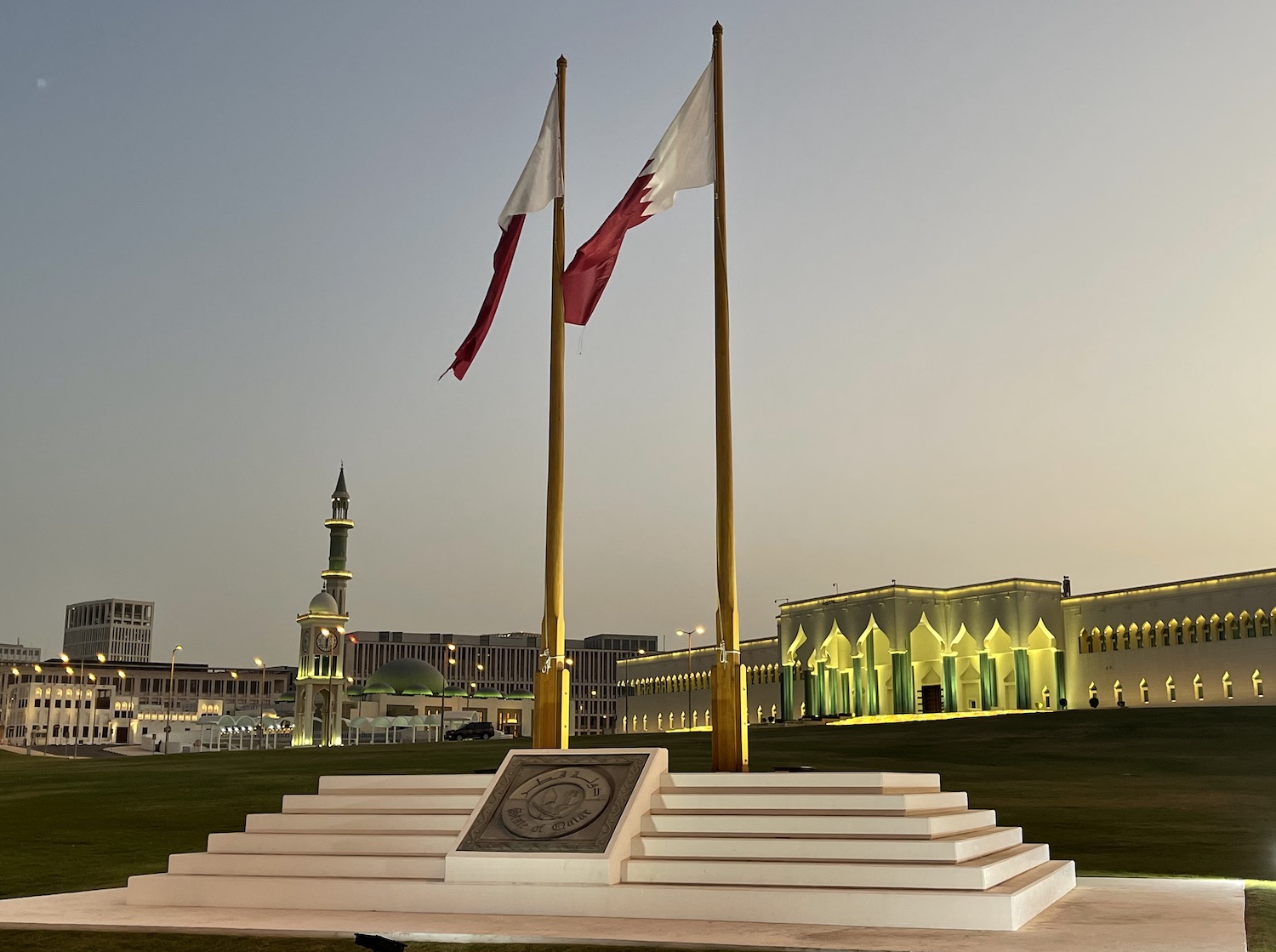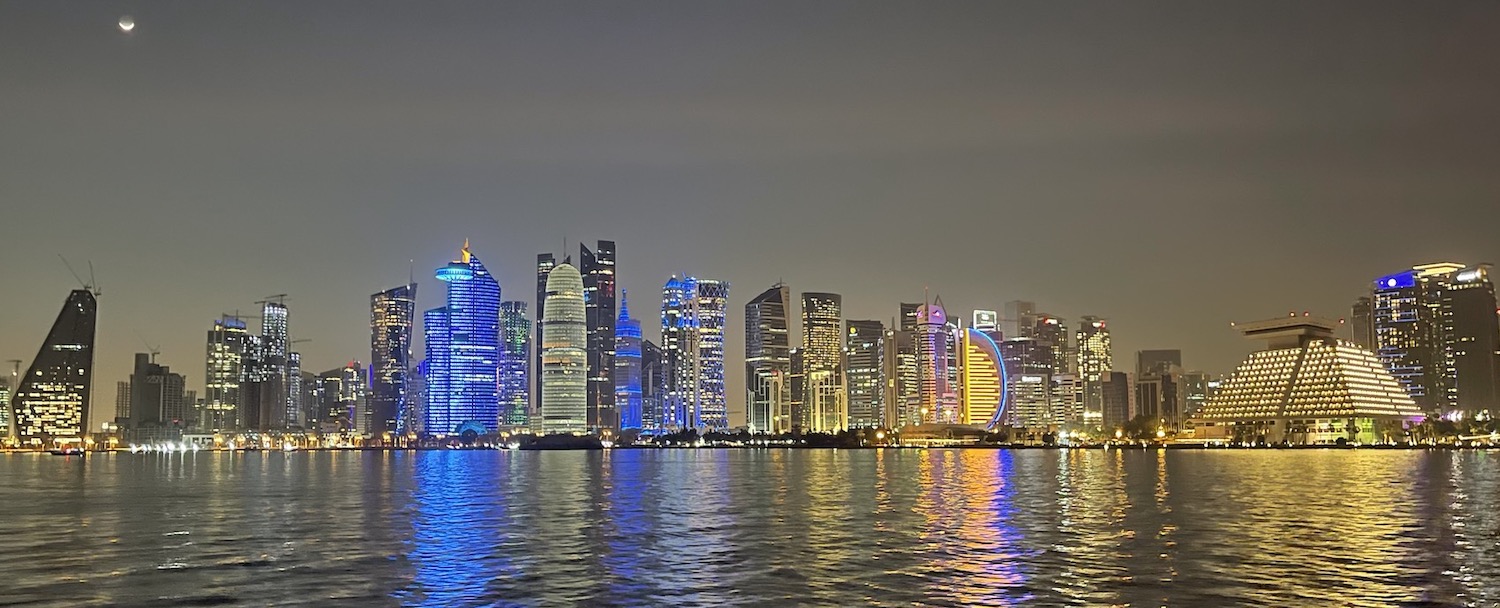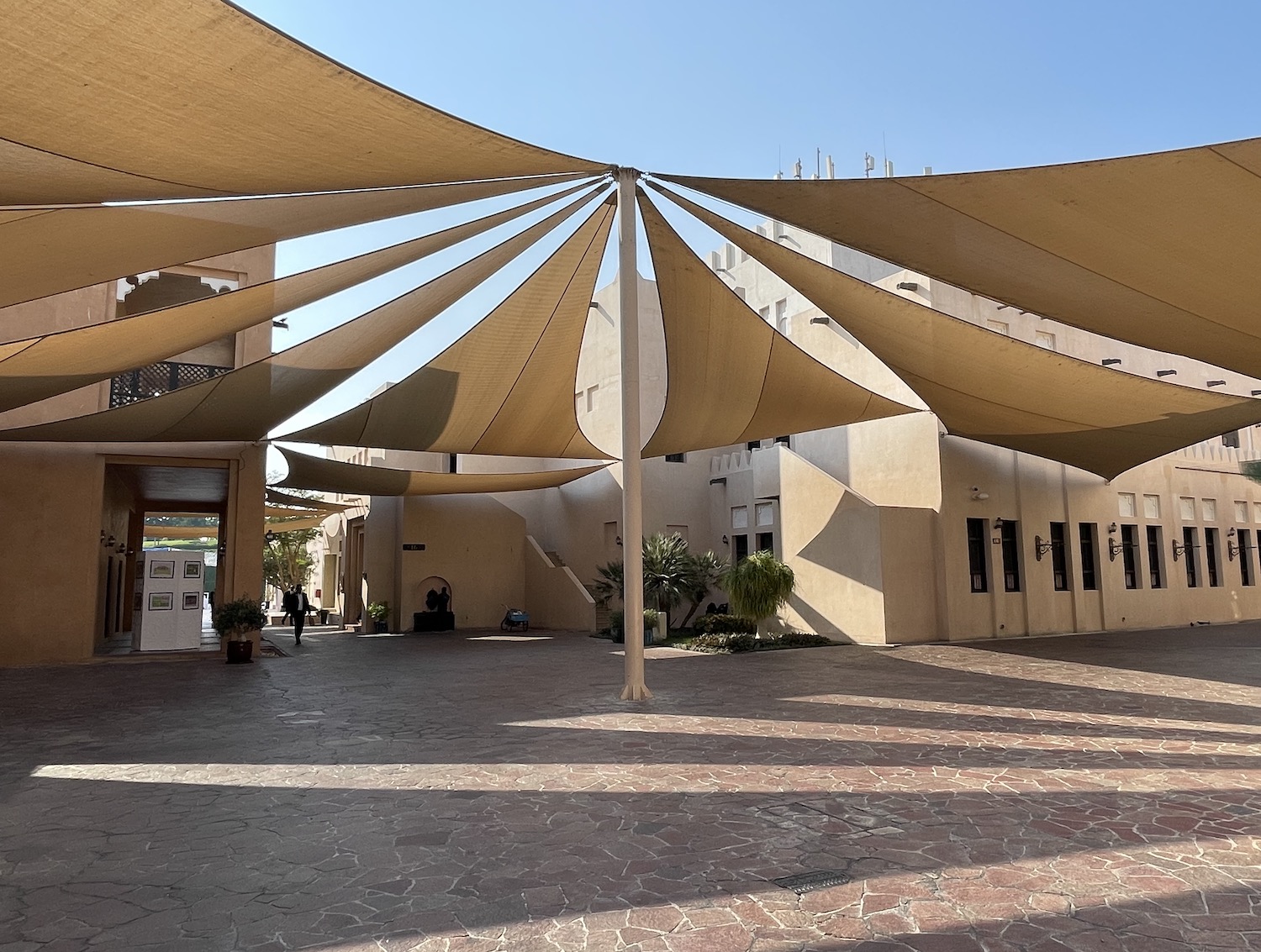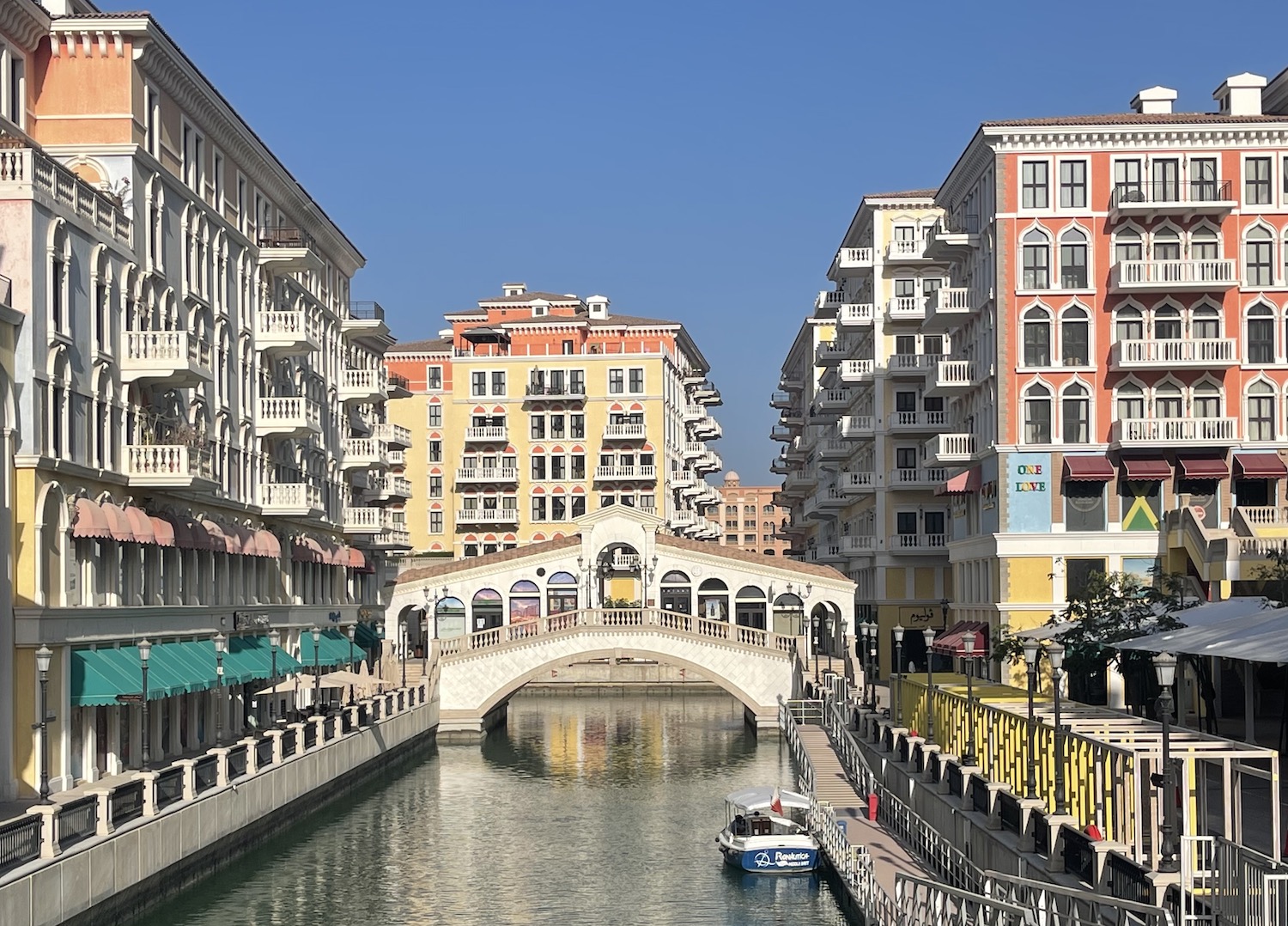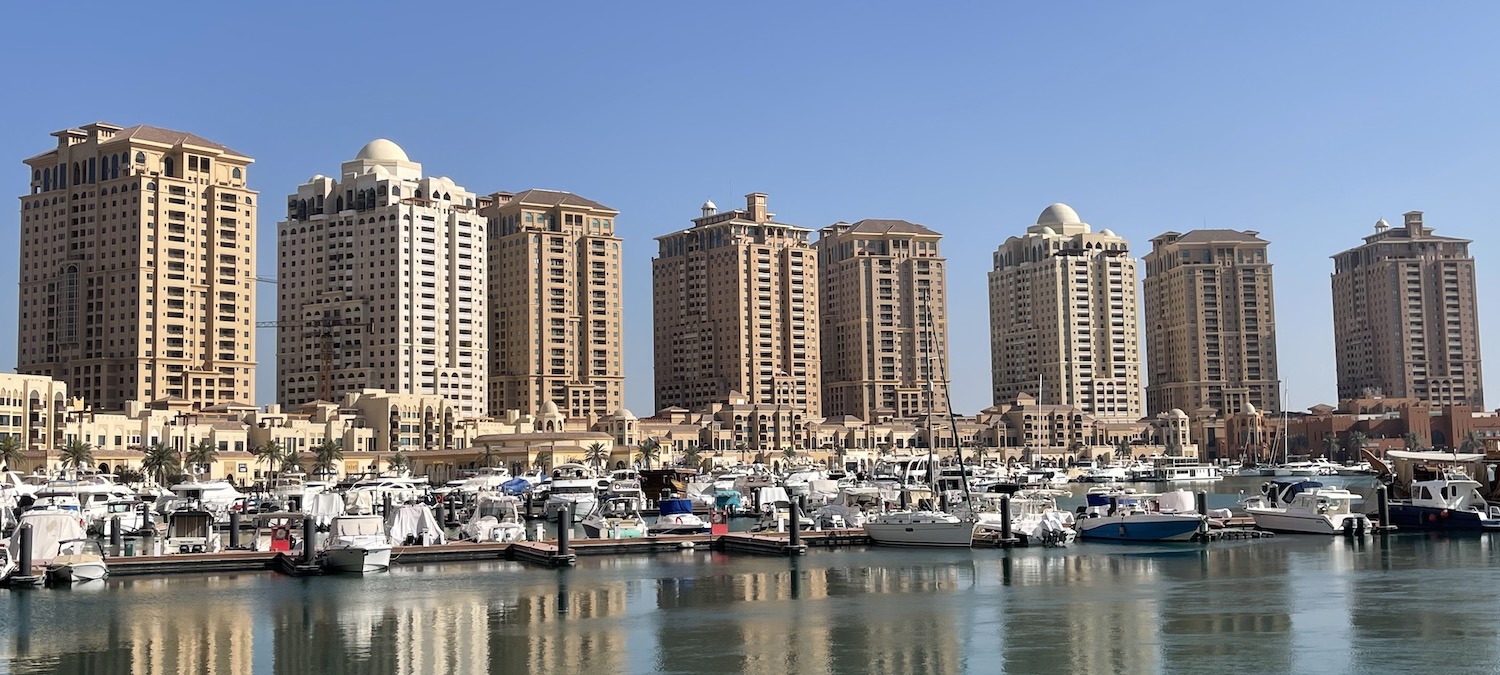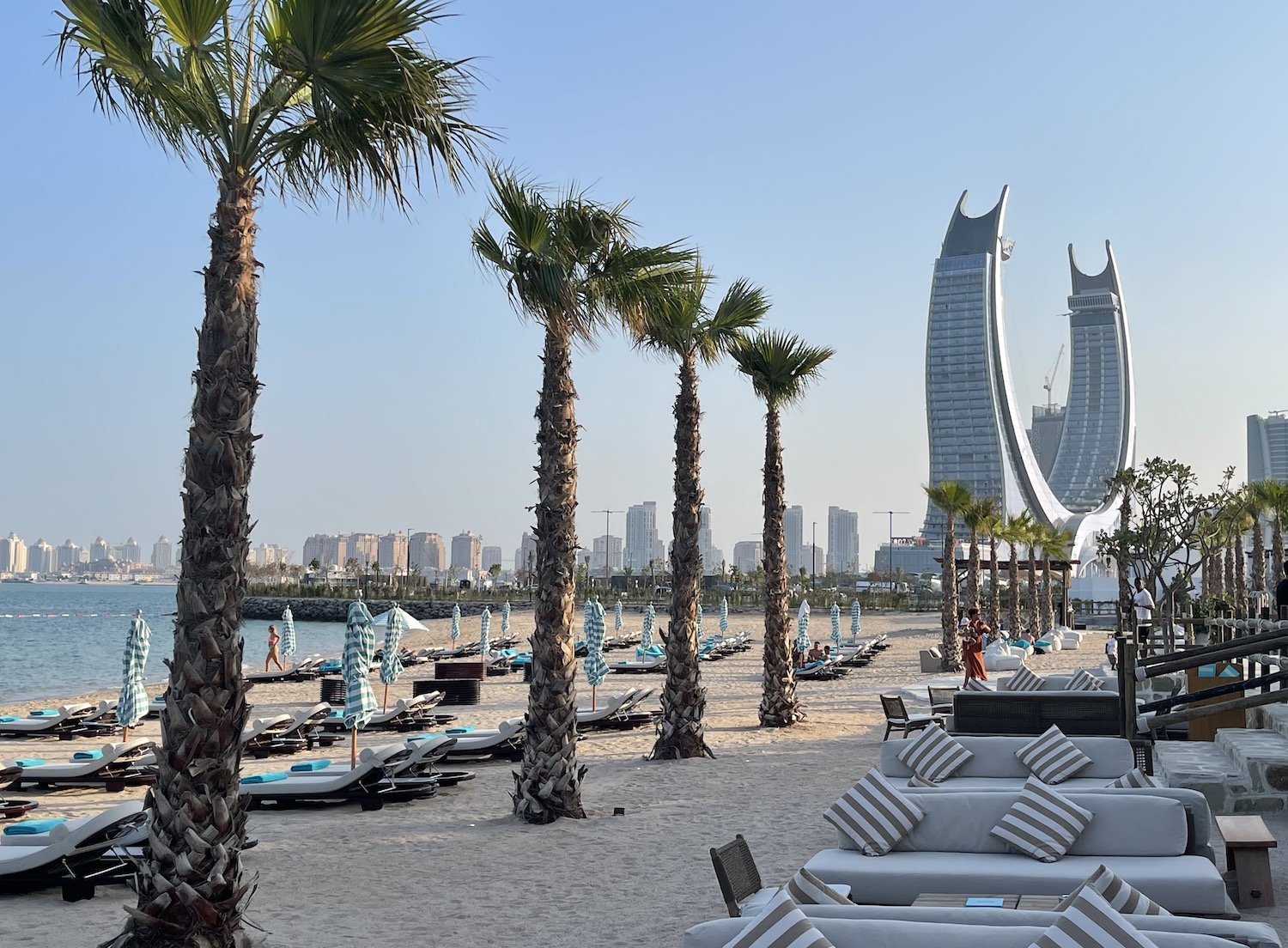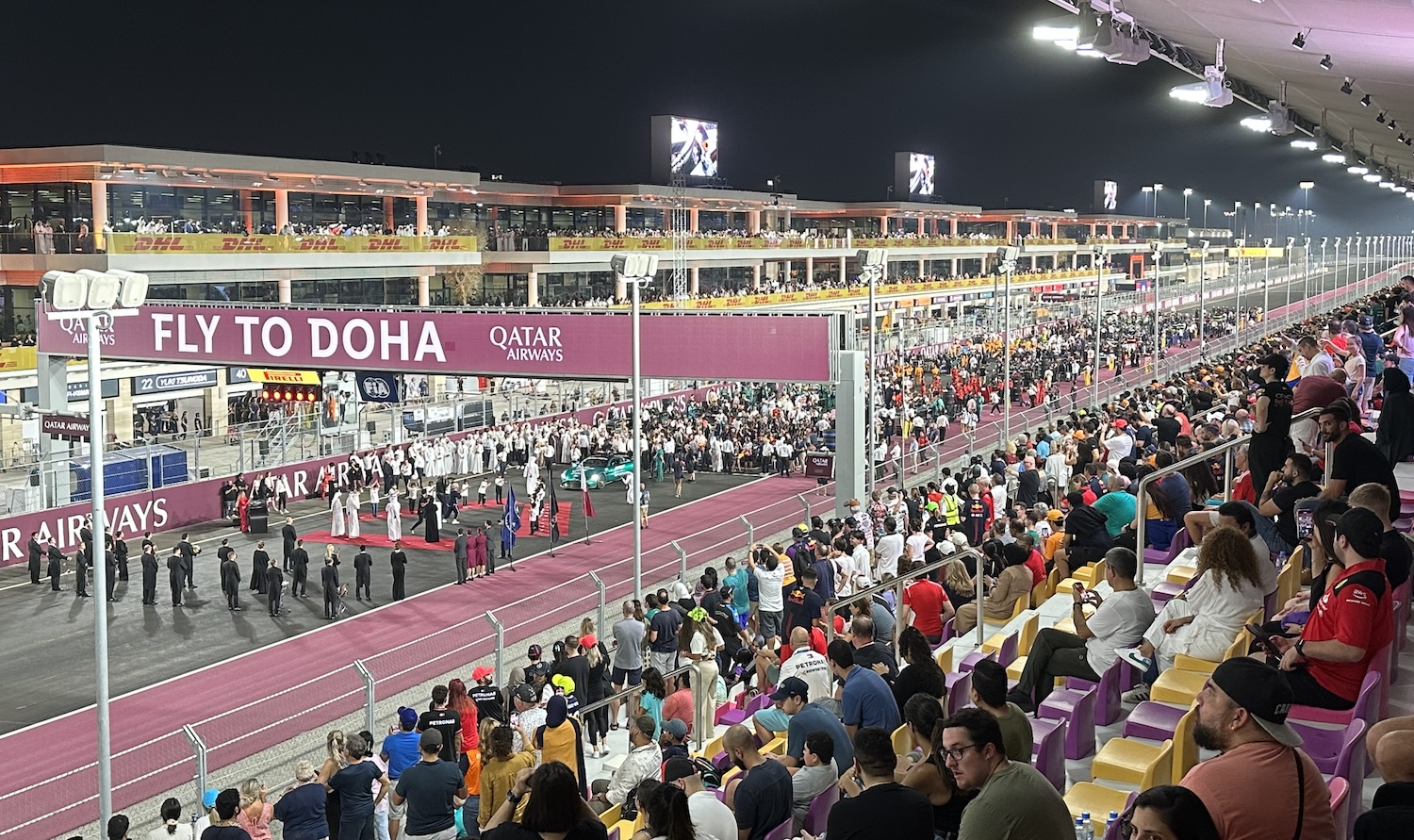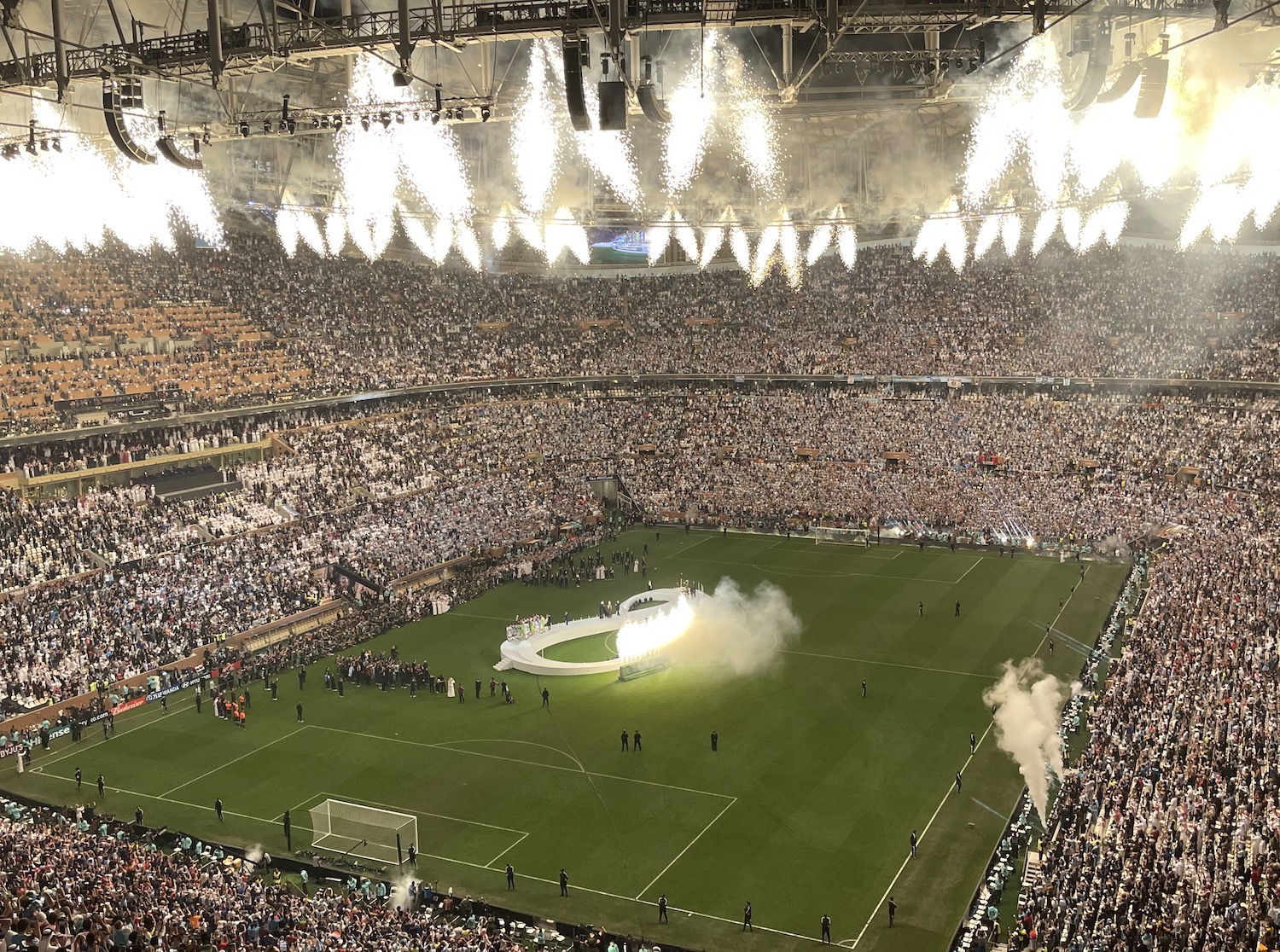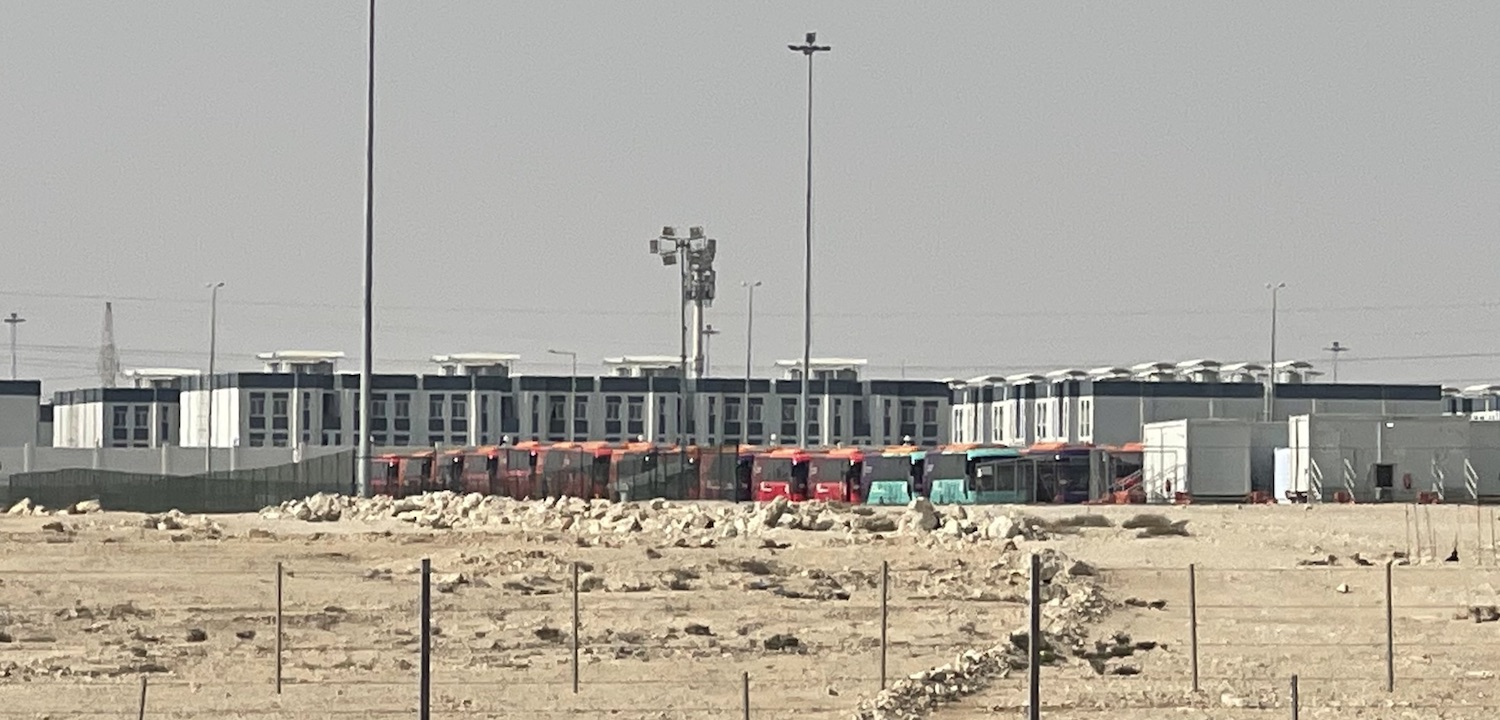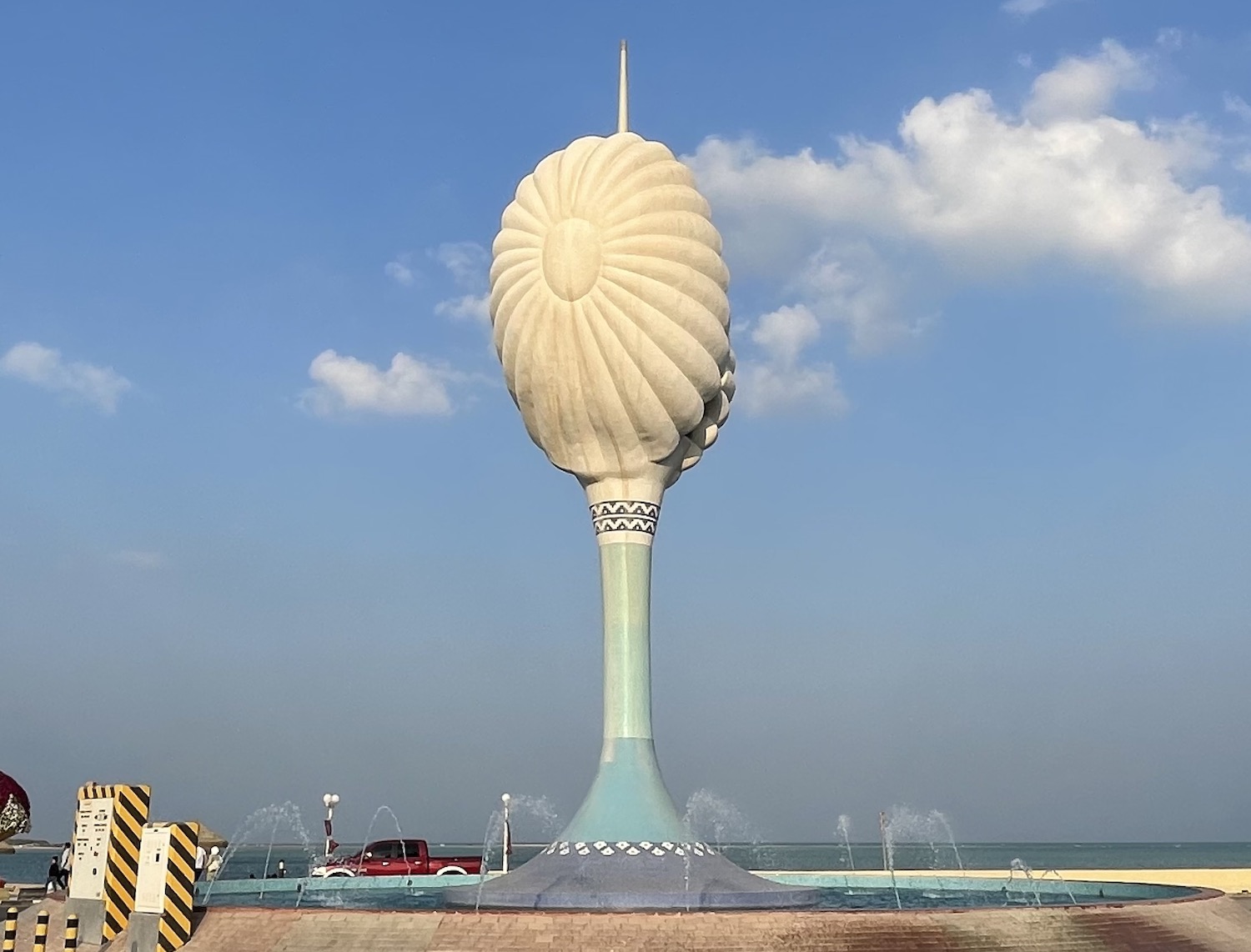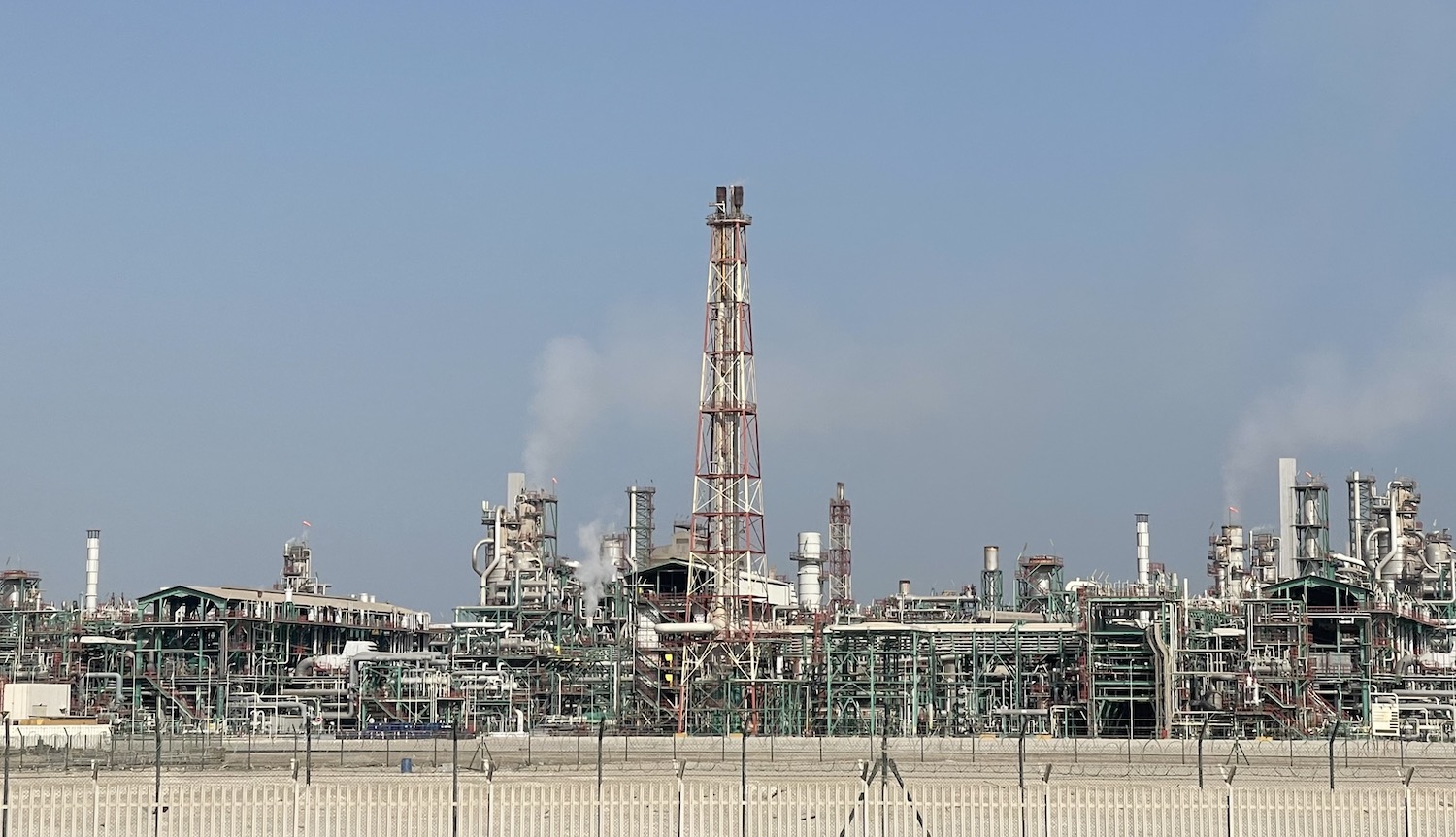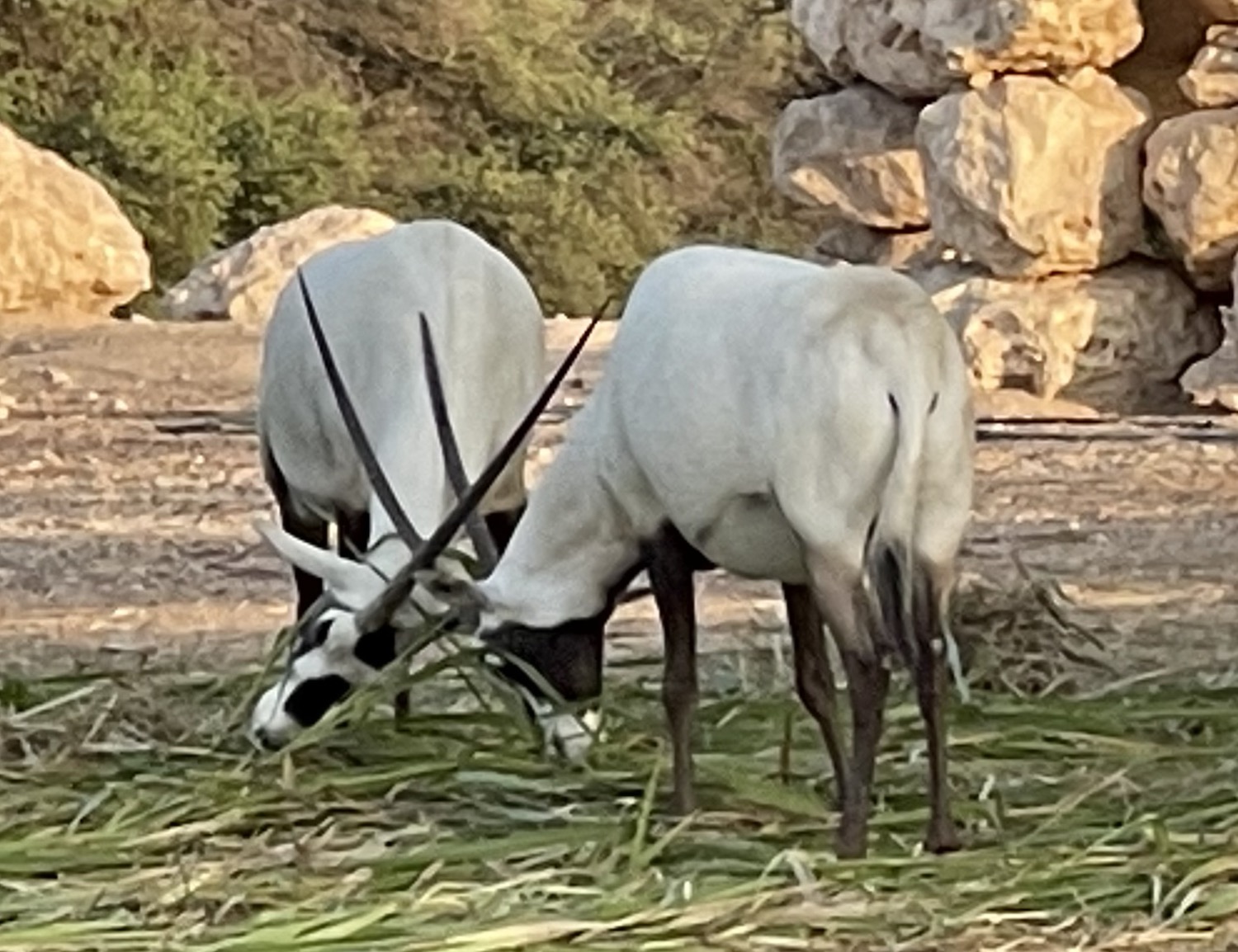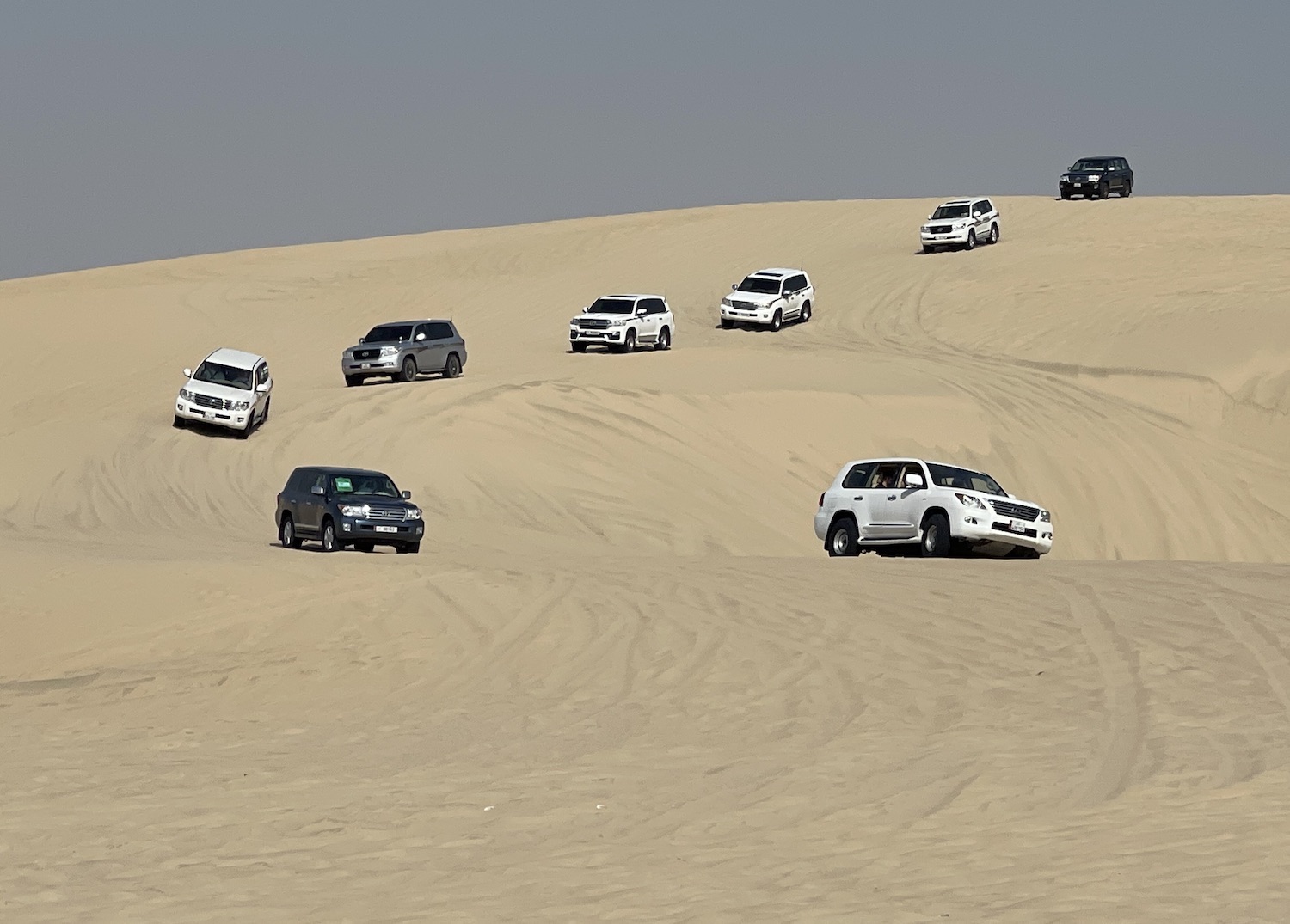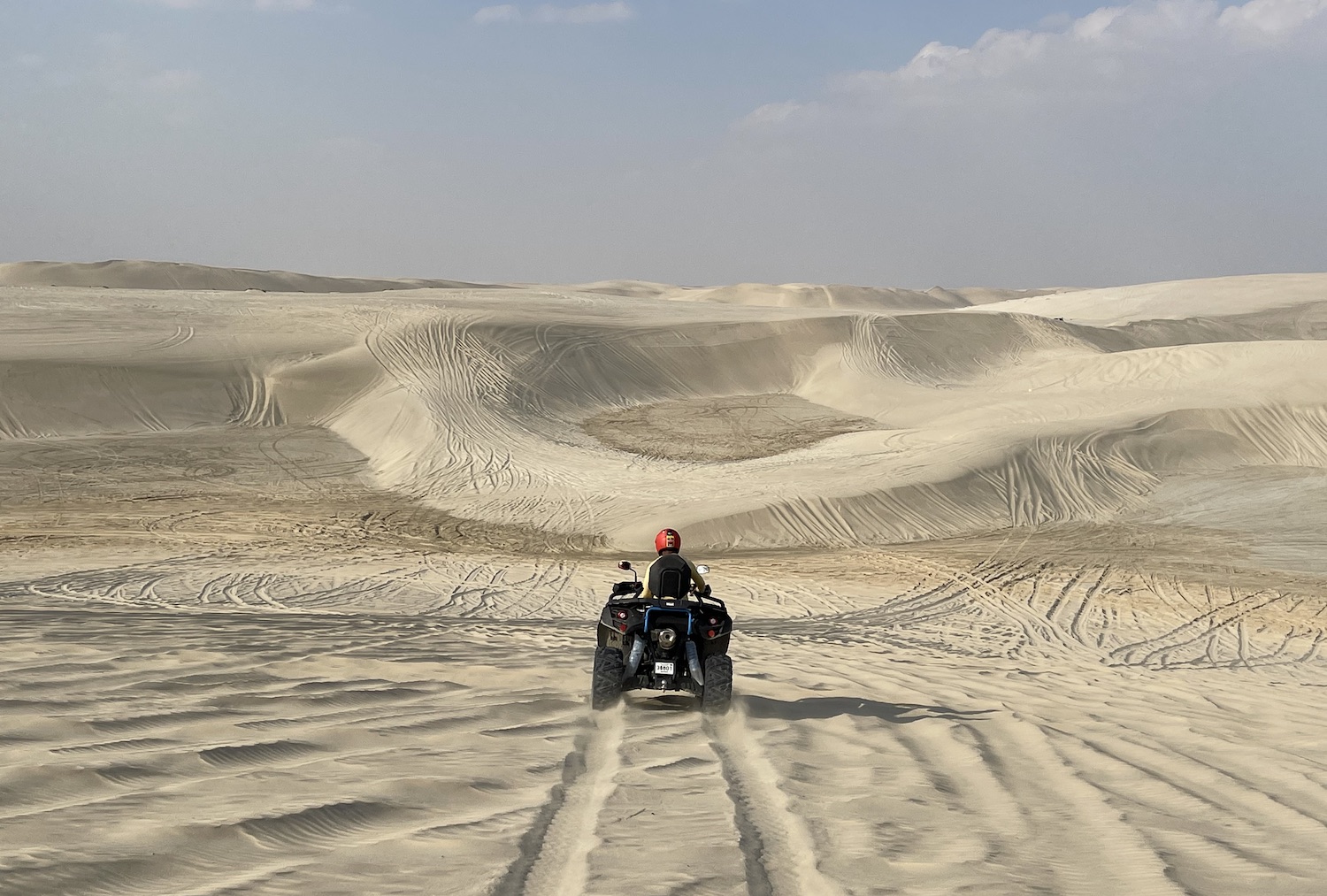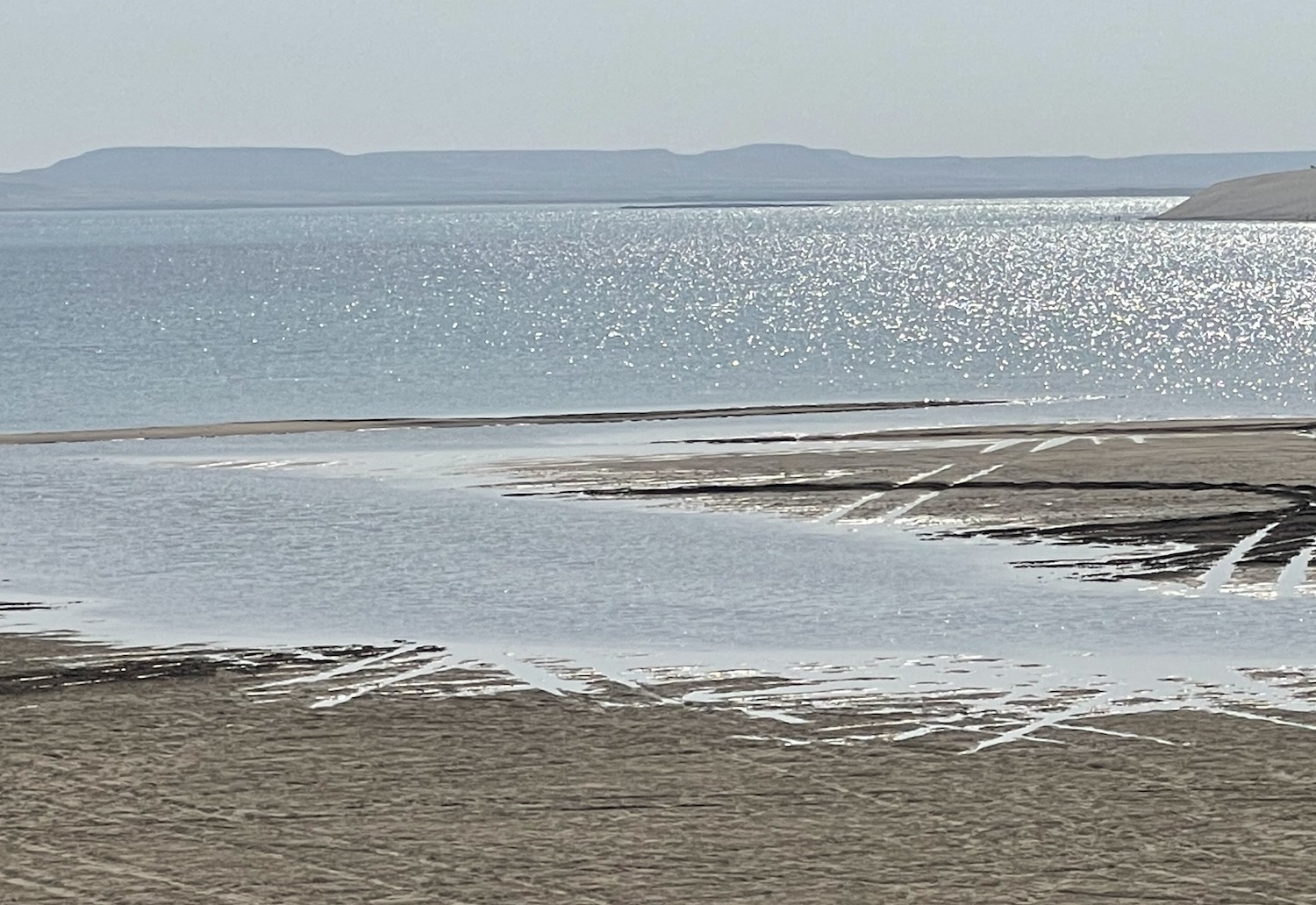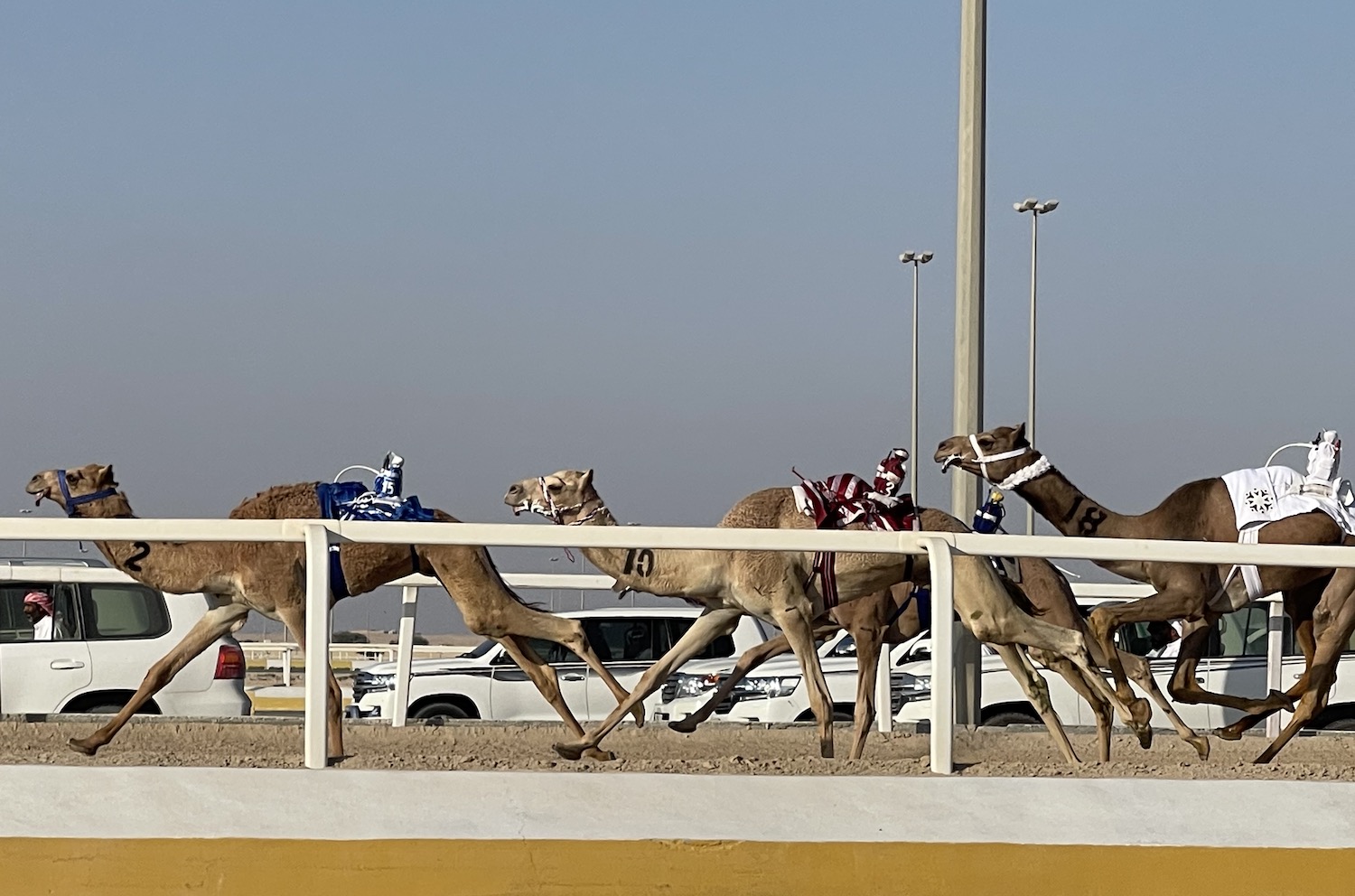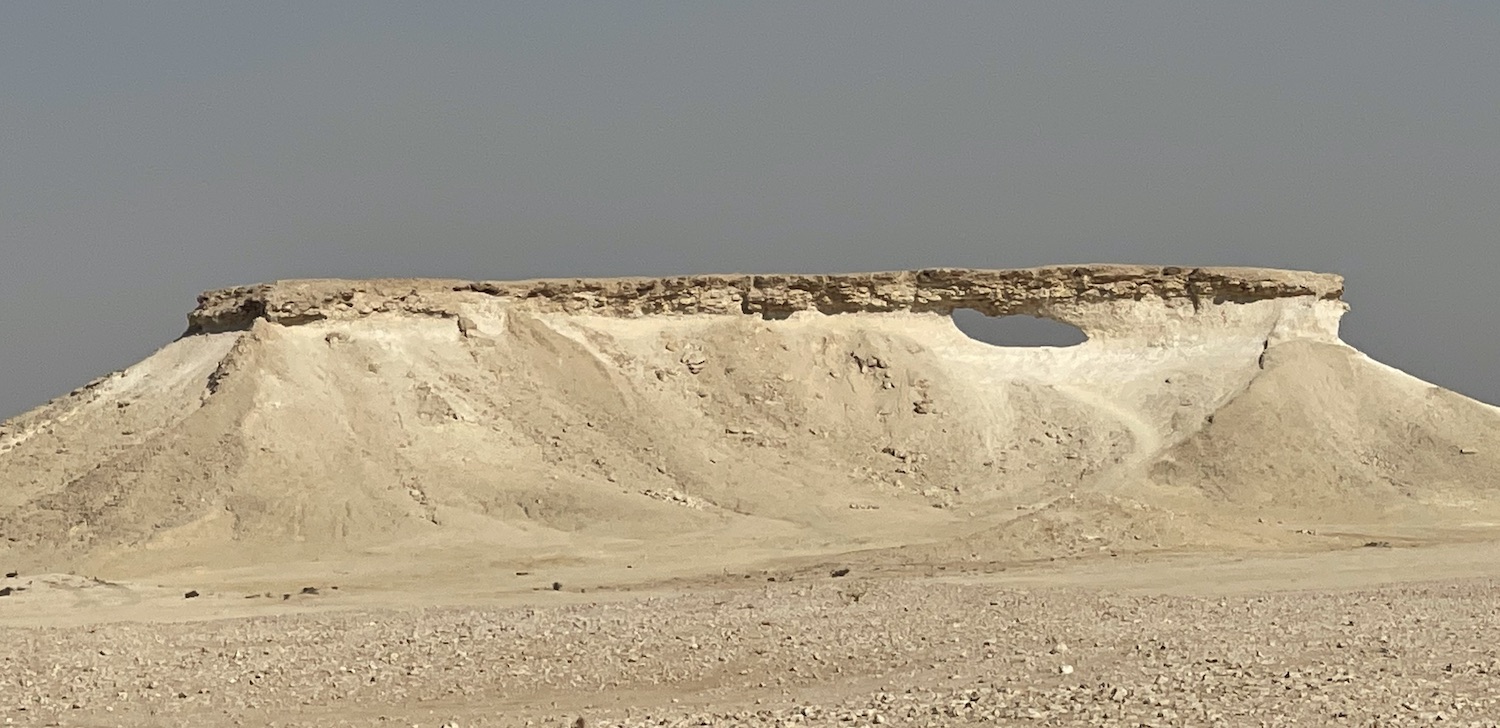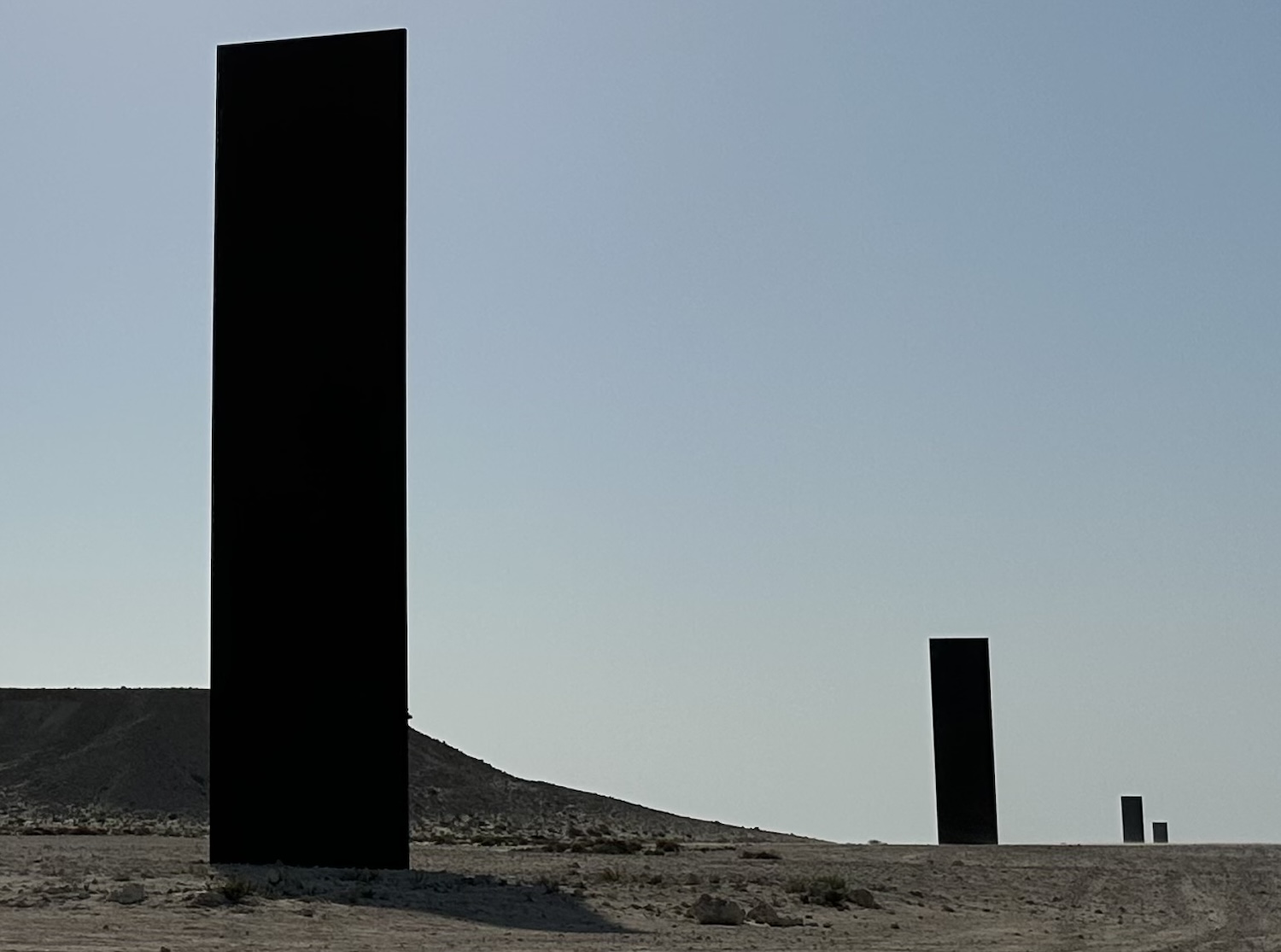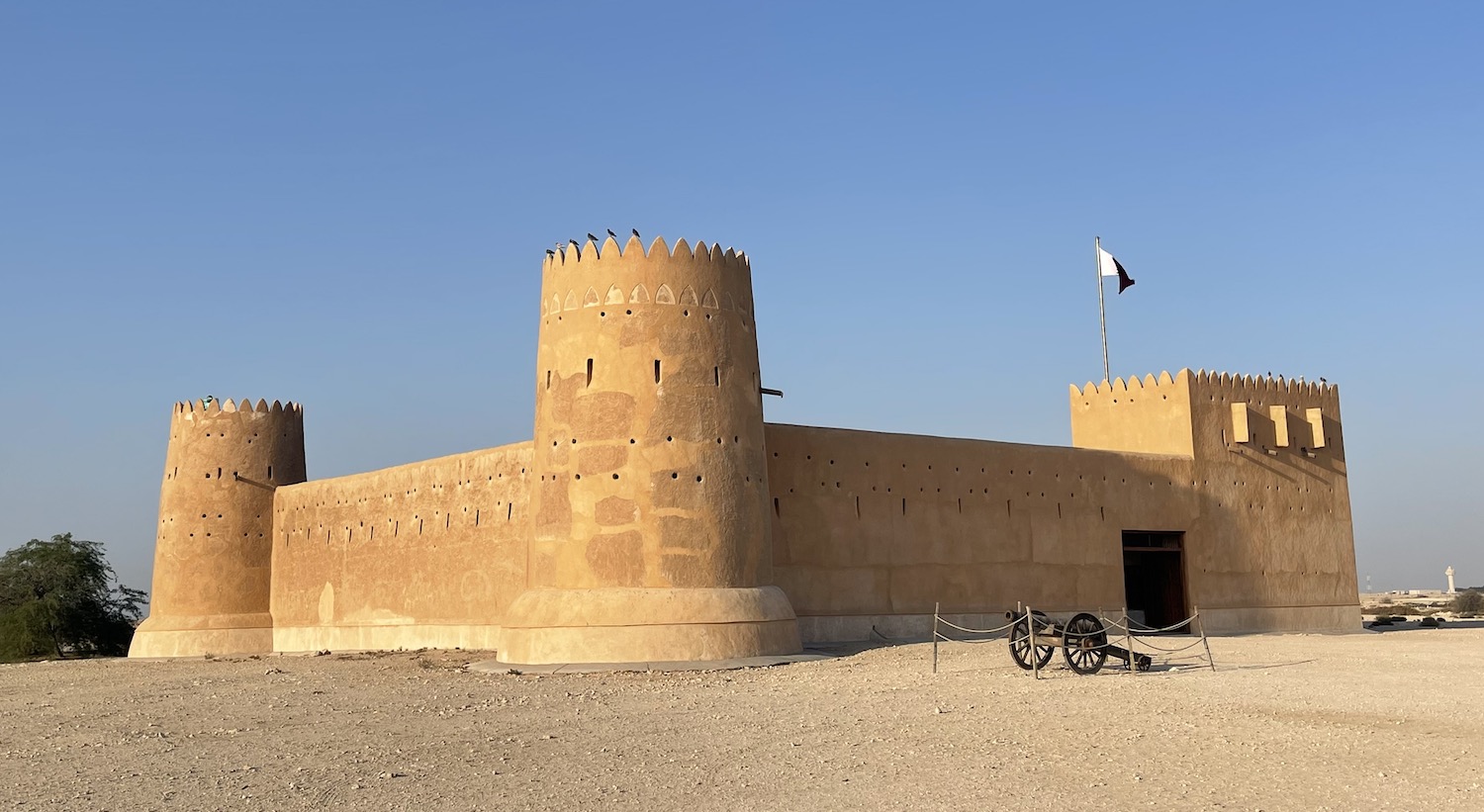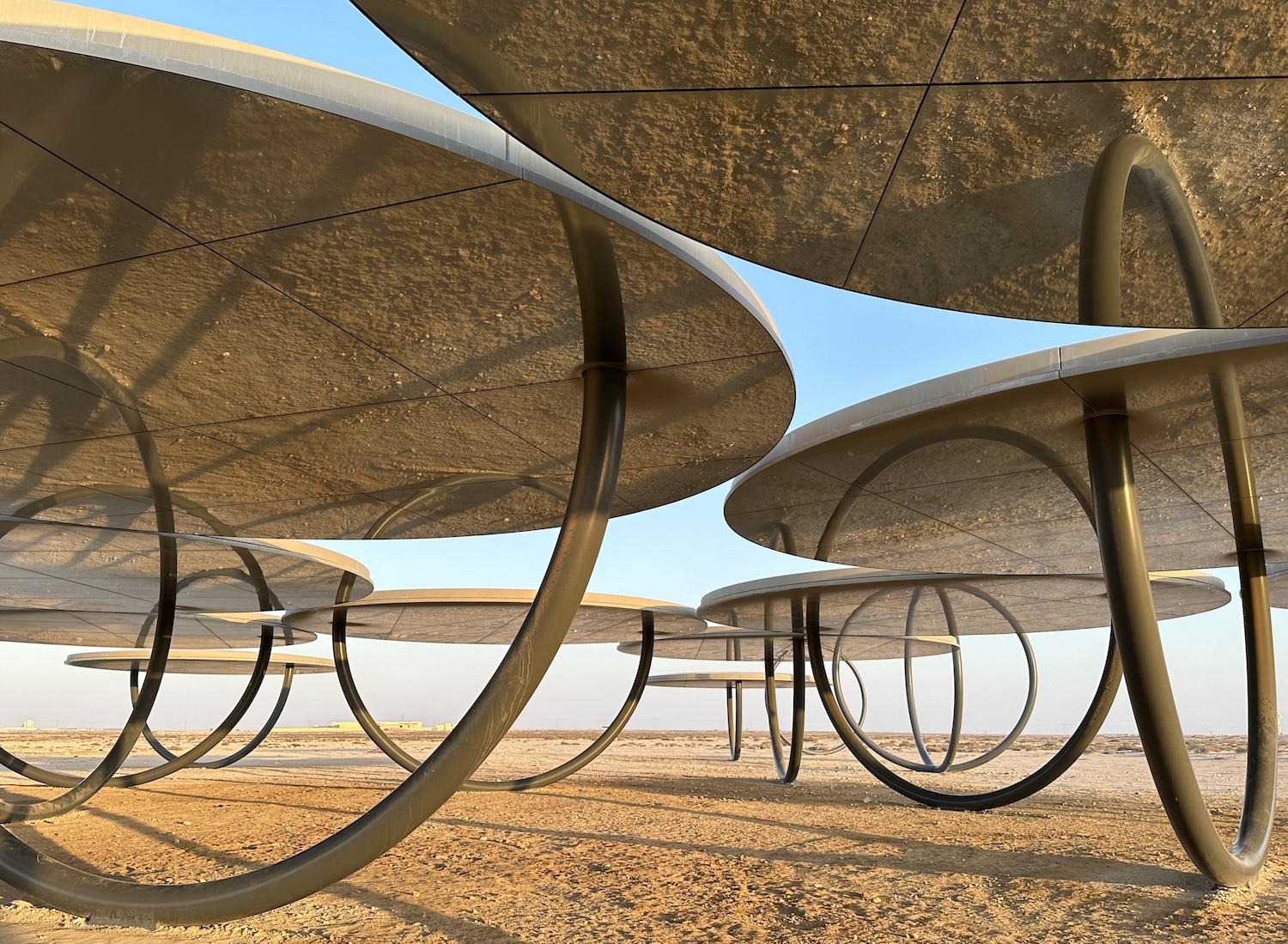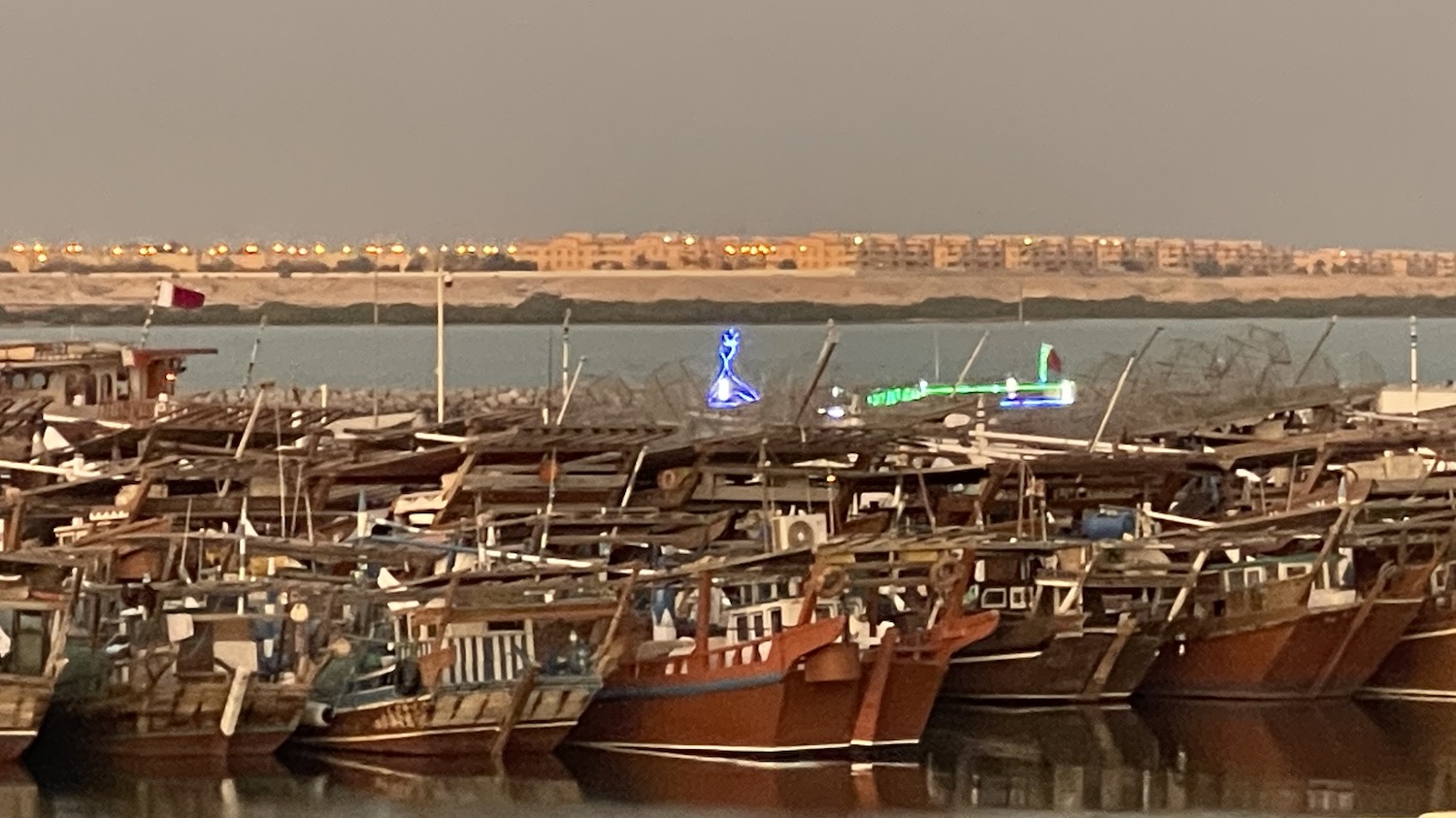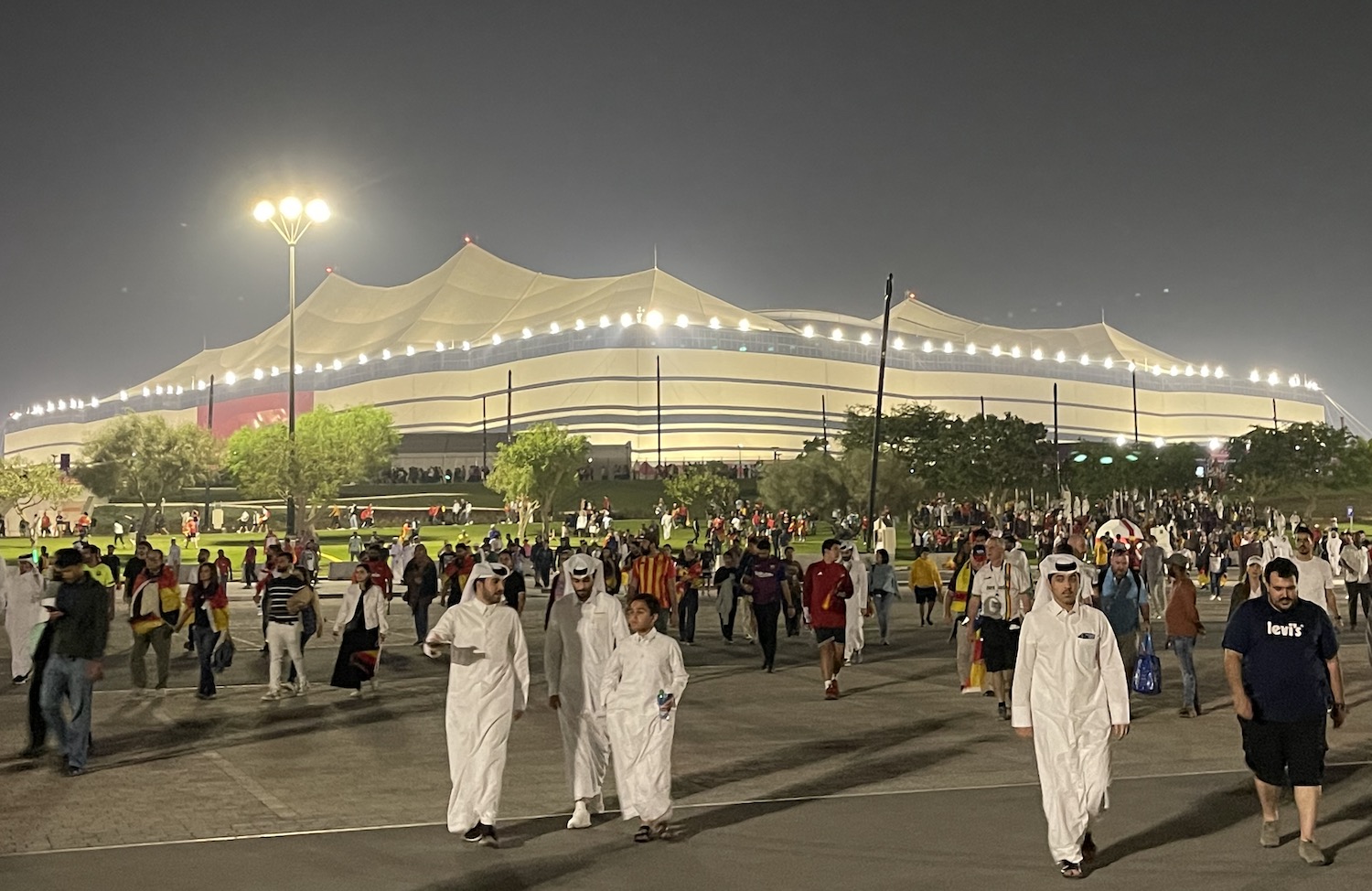This tiny peninsula jutting into the Arabian Gulf off Saudi Arabia, not much more than empty desert though long since wealthy thanks to plentiful reserves of oil and gas, was turbo-charged towards modernisation with the controversial decision of Sepp Blatter’s FIFA in 2010 to allow the State of Qatar to host the football World Cup in 2022. Whatever the merits of that for the sport, there is no doubt that the country has seized its moment to the full, investing vast sums to erect the brand new city of Doha on the middle of its east coast, full of contemporary skyscraping architecture and state-of-the-art facilities, as its shop window to the world.
Qatar had hoped to use attention on the World Cup to project a modern country, showing itself far from the Islamist terrorism that was a major global concern back in 2010, and a safe home for investigative journalists at Al Jazeera. It intended to show off Doha’s shiny new metro system, with an initial three lines and thirty-seven stations, and one of the world’s most luxurious airlines and airports (incidentally, Al Safwa First Class Lounge is one of the most beautifully designed and relaxing spaces on the planet).
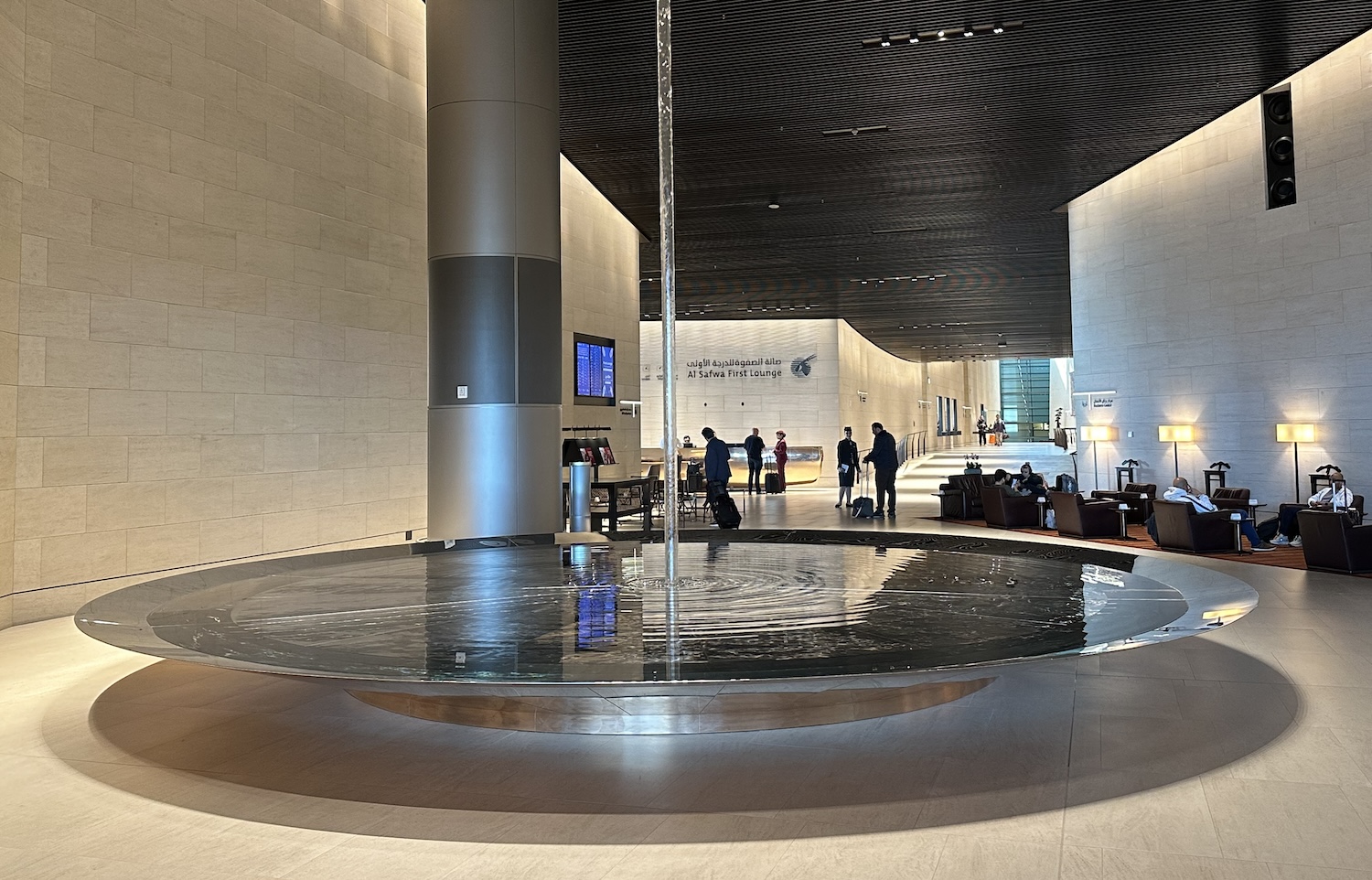
Instead, it ended up with rampaging criticism from the Western media, especially about human rights, and gay rights in particular, as well as its treatment of migrant workers. It is certainly true that as across the Middle East, homosexuality is criminalised, punishable by imprisonment for up to three years, a fundamental infringement of liberty hardly mitigated by the turn-a-blind-eye approach adopted during the tournament. Furthermore, it is alleged that as many as 6,500 foreign labourers, mostly from South Asia working in construction, died between 2010 and 2022, with hundreds of thousands trapped in the kafala sponsorship system, common throughout the Gulf though Qatar claims to have finally abolished it, which grants employers almost total control over their status. These controversies led many in the west to boycott (mostly from the comfort of their armchairs) the World Cup itself, the biggest event ever held in the Middle East.
I took a different view, believing that engaging with ordinary people who live under regimes with which I have fundamental disagreements is a better way of fostering understanding and building common values. And there is plenty of evidence of Qatar shifting attitudes over recent years, if not yet far enough. So I chose to go to dozens of matches over the whole World Cup month, in addition to making several other visits here during the time I have lived in the region. I hope this article points those with open minds at how to get at the pleasures of Qatar after the glories of the World Cup and seek truths beyond its screaming headlines.
In any case, of course, in the end, on the pitch it was an acclaimed spectacle, and in the stands and across Doha it was the world’s most successful experiment in multiculturalism. With the fans of thirty-two countries mashed-up under one roof, it quickly became common on the metro and in the souq to see Iranian shirts topped with sombreros, Saudi supporters chanting for Morocco, and women in burqas wearing Brazil scarves.
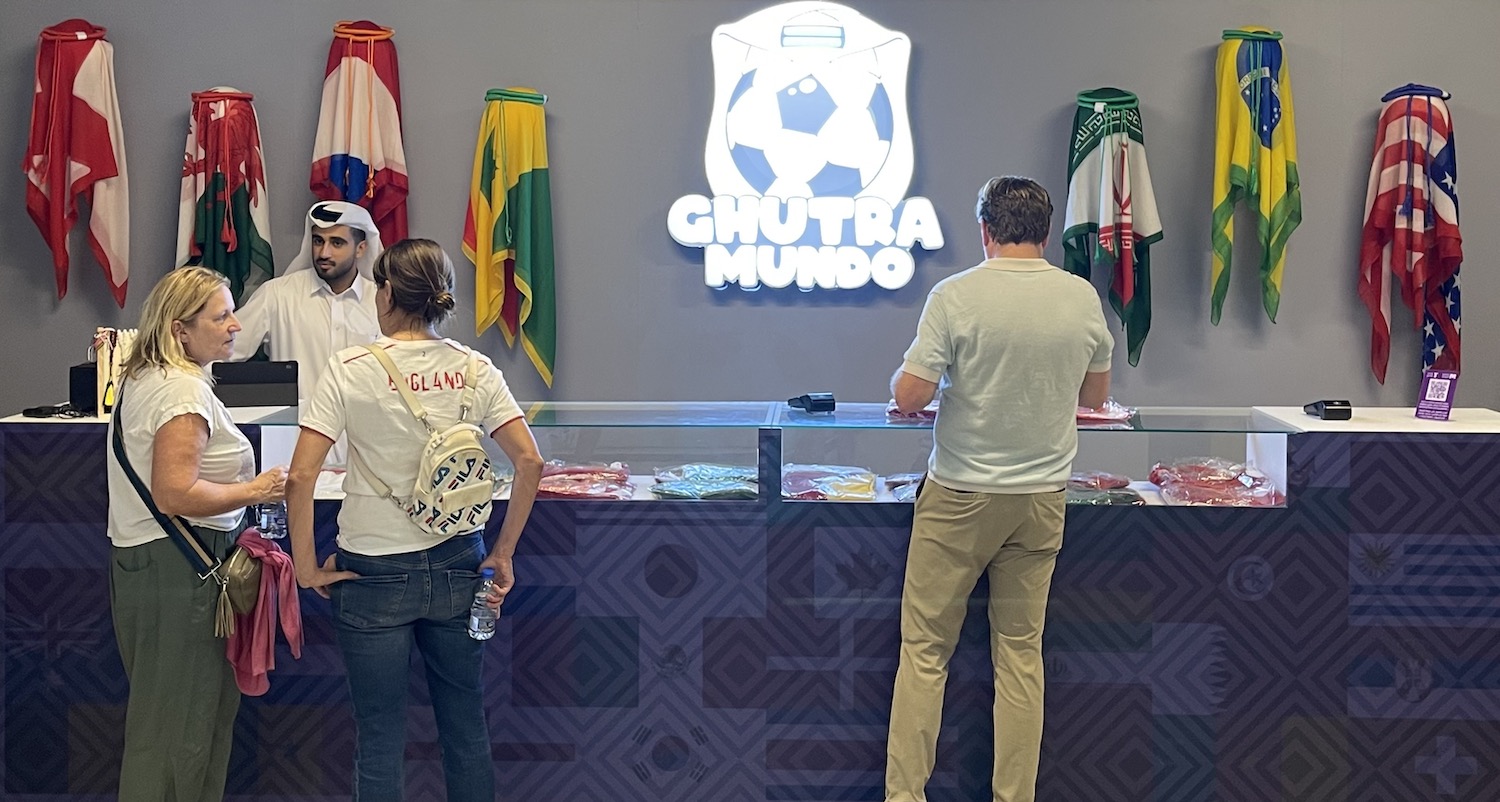
Having been under the control of the Iranians’ Sasanian Empire since 224 AD, most of the local tribes on this land readily converted to Islam at the request of the Prophet Mohammed (PBUH) in 628. The area then thrived on camel and horse breeding, pearling and trading. From the sixteenth century it was controlled in succession by the Portuguese and the Ottomans until the Khalifas from Kuwait took both Bahrain and then Qatar in 1783. Following a series of local conflicts, Britain enforced a truce between all the emirates in 1835, and then in 1871 imposed a settlement that separated Qatar from Bahrain and recognised Sheikh Mohammed bin Thani as its semi-independent political leader. The House of Thani continues to rule to this day, now as hereditary absolute monarchs.
Qatar became a British Protectorate in 1916 but as the British Empire retreated East of Suez, Qatar joined talks with Bahrain and seven other Trucial States to establish a brand new federation. However, political disputes led Qatar and Bahrain both to withdraw and announce independence in 1971 as the others formed the United Arab Emirates.
Oil had been struck in 1939 and gas was discovered in 1972, fuelling the rockets of economic development. Meanwhile, Qatar has maintained the strictest adherence to Islam in the whole region. Sharia law is entangled in civic law, upheld by flogging and stoning, with apostacy and homosexuality by Muslims technically punishable by death, although that has never actually been carried out. There is zero tolerance of failure to abstain from food and drink during Ramadan, when the high streets are all closed during daylight hours. All year round QBS 97.5 English-speaking radio interrupts programming five times a day to broadcast the calls to prayer. You are expected to dress modestly at all times, women to avoid miniskirts and sleeveless tops, and men to eschew shorts and vests.
Muslims are not allowed to consume alcohol. Foreigners cannot bring it into the country and it is rarely found in restaurants on the streets, but it is available in five star hotels. The Qatar Distribution Company operates the one and only liquor store, accessed with a local licence.
There are 3 million Qatari residents but fewer than 400,000 Qatari citizens. The rest are migrant workers, mostly males building and operating the country, which has caused there to be three men to every woman, the most unbalanced gender ratio in the world. Roughly a third of the total population are non-Muslims, almost all foreigners, and of the two-thirds who are Muslims about 90% are Sunni Wahhabis. In a trend at odds with the five other Gulf Cooperation Council countries, a relatively small proportion of the population, about a quarter, is under 25.
Although indigenous Qatar has the same ethnic and religious composition as Saudi Arabia, the two have long had hostile relations, largely stemming from the little peninsula’s history of rule by foreigners wary of its massive neighbour. In recent history, Saudi accused Qatar of using Al Jazeera to foment the Arab Spring in the early 2010s, and from 2017 to 2021 Saudi led a regional boycott of Qatar, supported by Bahrain, the UAE, Yemen and Egypt, in protest at its open door foreign policy that led to links with Hamas, the Muslim Brotherhood and the Taliban.

All in all, the enduring legacy of the World Cup – both the modernisation and the controversy – spatchcocked onto a quiet conservative Islamic culture, makes for an intriguing retreat. It’s not hard to have a fun long weekend in Doha, but nor would you be struggling for things to do if you stayed for a week or more. It is obviously oven hot in the summer and surprisingly quite chilly in the winter, so the best times to come are spring and autumn.
Doha
Of the 3m people who live in Qatar, 2.5m are in Doha, the tail that wags the dog. Founded in the 1820s as an offshoot of neighbouring Al Bidda and controlled by the Al Thani Dynasty, it was just another small town in the desert until a few short decades ago. The country’s capital since independence in 1971 has been propelled first by oil wealth and then by US$200 billion of World Cup investment into a genuine metropolis with first class facilities for locals and residents, and business and leisure travellers alike.
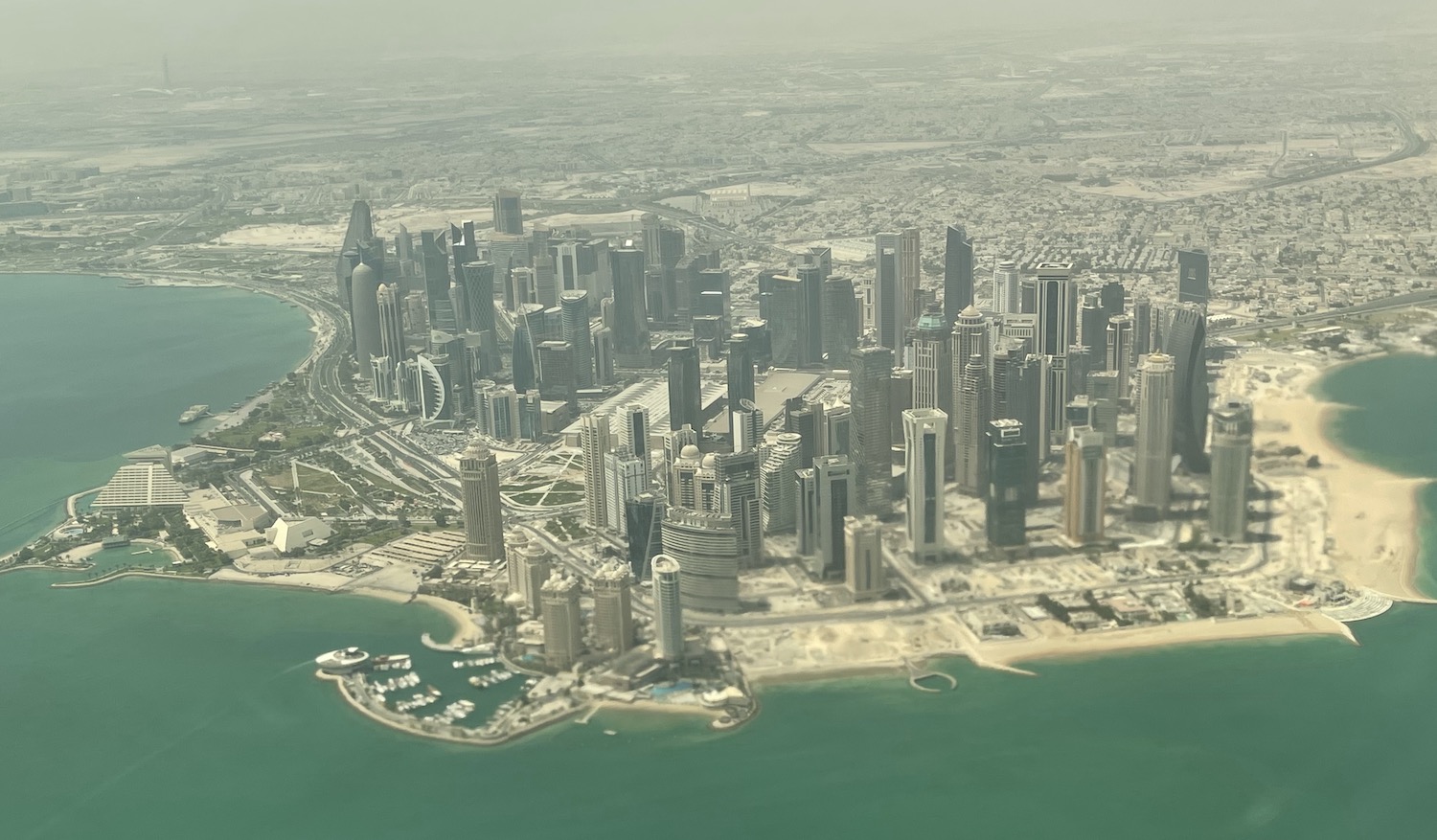
The heart of this hyper-modern city is 200-year old Souq Waqif, where ancient Bedouin nomads brought camels and spices to market. It is just twenty minutes from Hamad International Airport to the east. After falling into decline, loving restoration over the past fifteen years has burnished its authenticity and created my favourite bazar on the entire Arabian Peninsula, which has the feel of a magical film set.
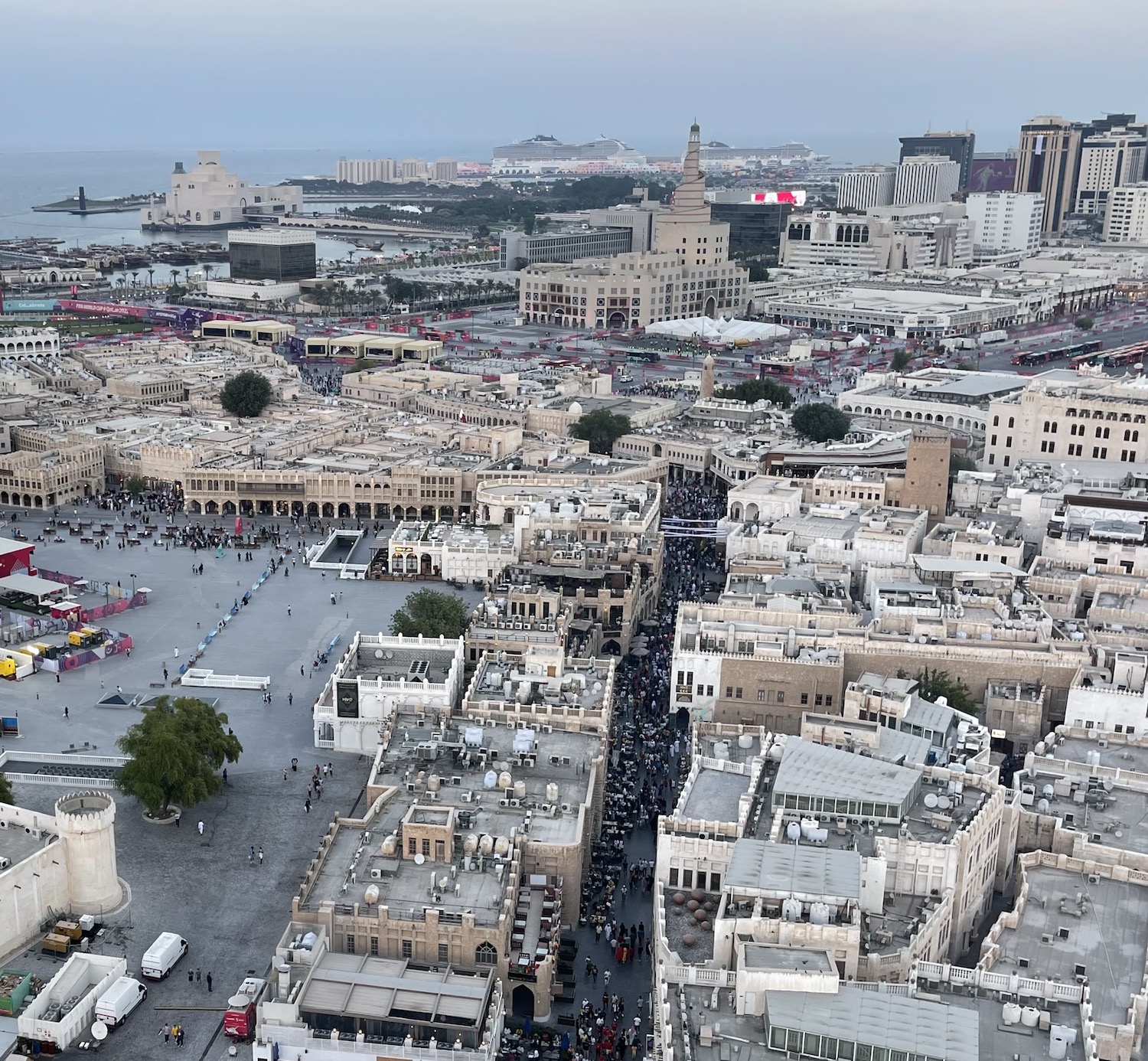
The souq’s wide main street is the place to be when things get going in the evenings; it is decked with hundreds of tables and chairs for food, coffee and shishas that render it a narrow thoroughfare for the waves of people – and occasional horses – that pass by.
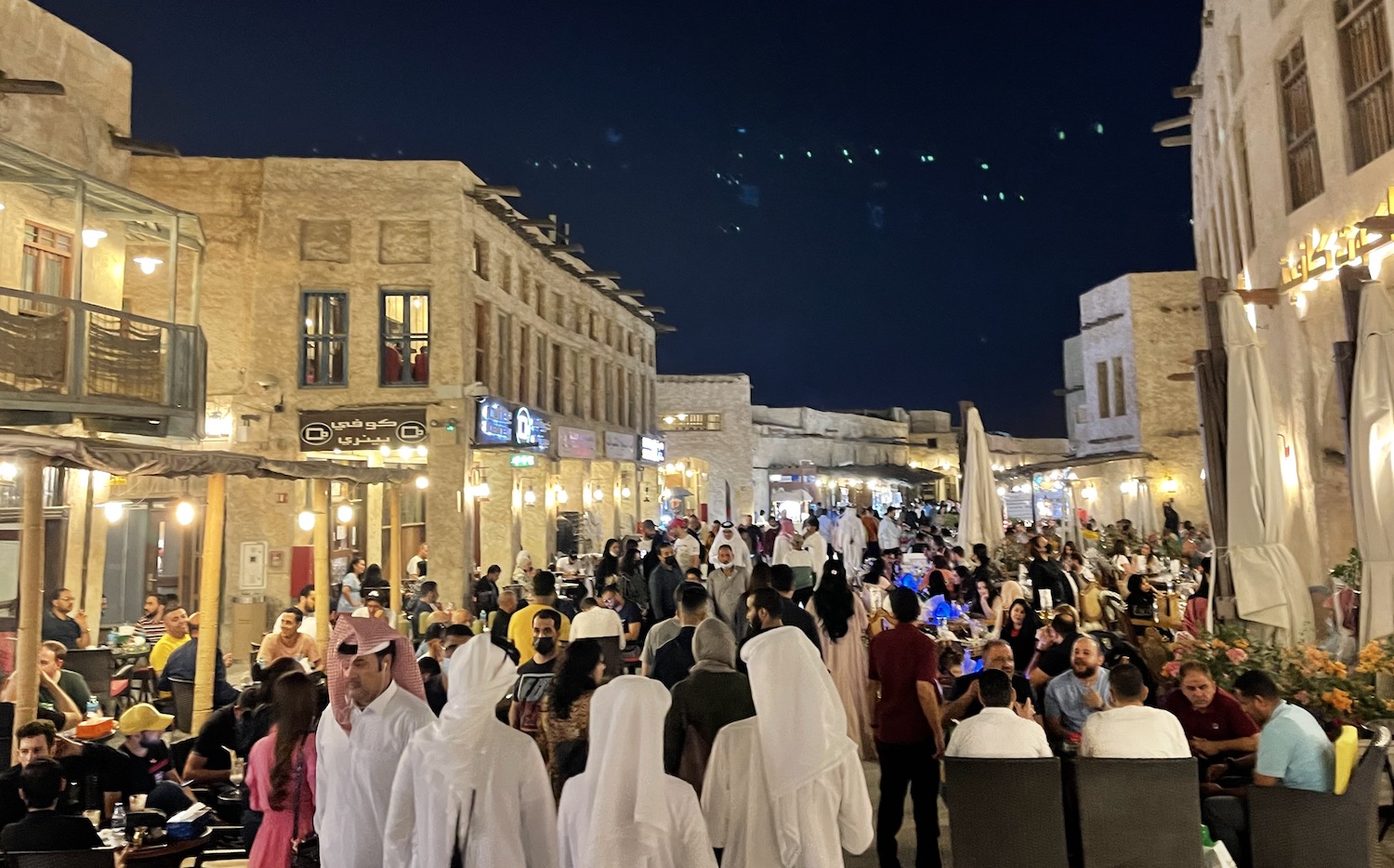
The whole maze is crammed with cardamom-scented narrow alleyways, and tiny stores selling everything from pearls and spices to gold, jewellery and tourist trinkets, along with little squares full of stalls where women in burqas cook crepe-like regag with cheese and honey. Somehow also in here is a giant piece of public art of the kind Qatar does so well: Le Pouce (“The Thumb”), in this case gold and two-stories high, by Cesar Baldaccini.
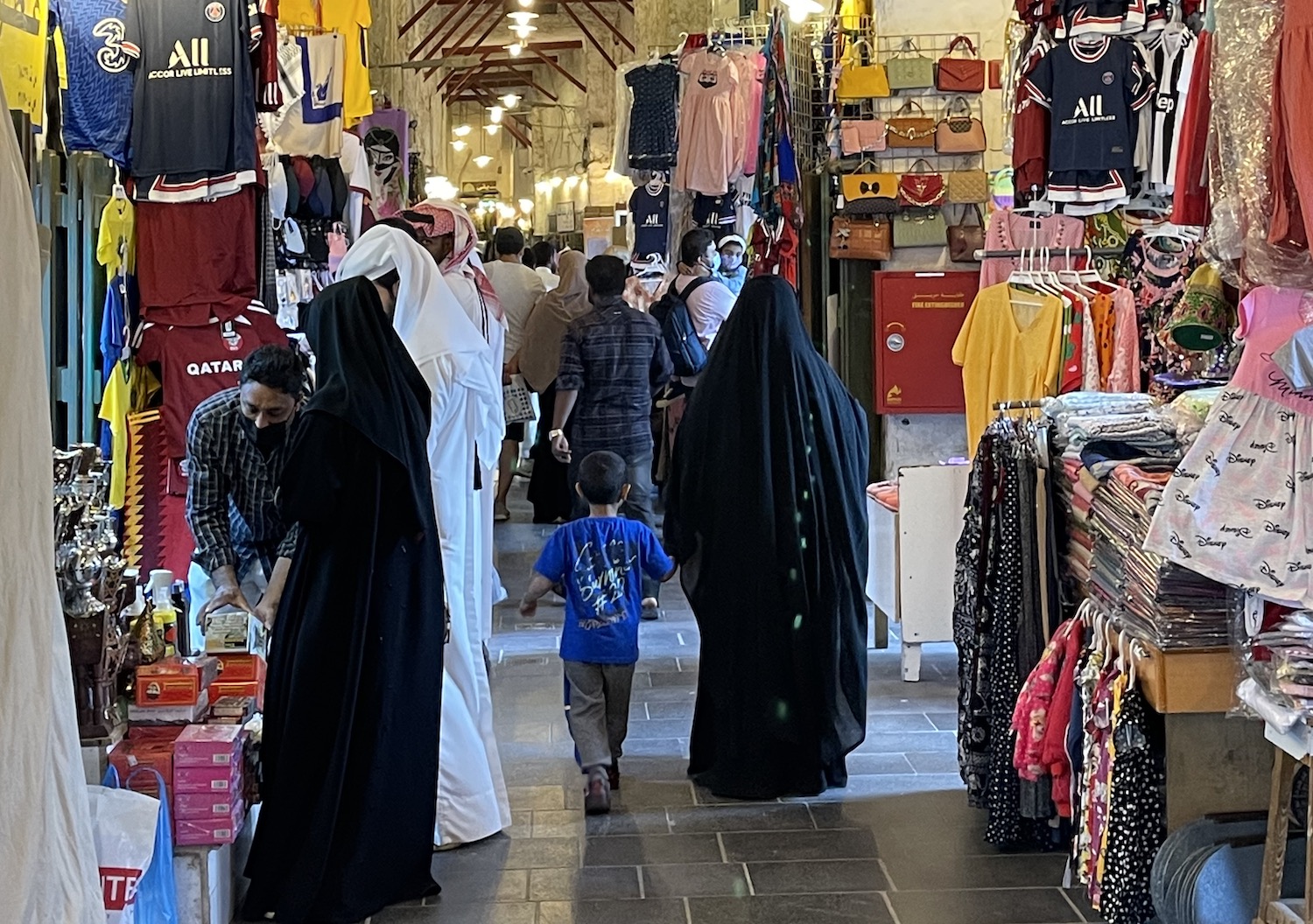
The star turn that makes Souq Waqif totally unique is the separate arcade of the Falcon Souq. Falcons are the national birds and falconry is the national sport. Going back three millennia, they have been trained to catch smaller birds and hares for human consumption, and to teach children the virtues of courage and patience. These days, they are of course popular in tourist displays across Arabia (putting Eskimos’ alleged fifty words for snow in the shade, apparently there are more than 1,500 Arabic terms for falcons and falconry) and this is probably the most important market for them in the whole Middle East.
In this part of the souq, there are dozens of falconers’ shops. Each has a series of platforms to which falcons are tethered; the birds are also blinded by leather hoods that are removed only when they are fed raw meat. Depending on type, size and colour, they can cost anything from 30,000 Qatari riyal (less than €10k) all the way up to more than a million riyal (over €250k).
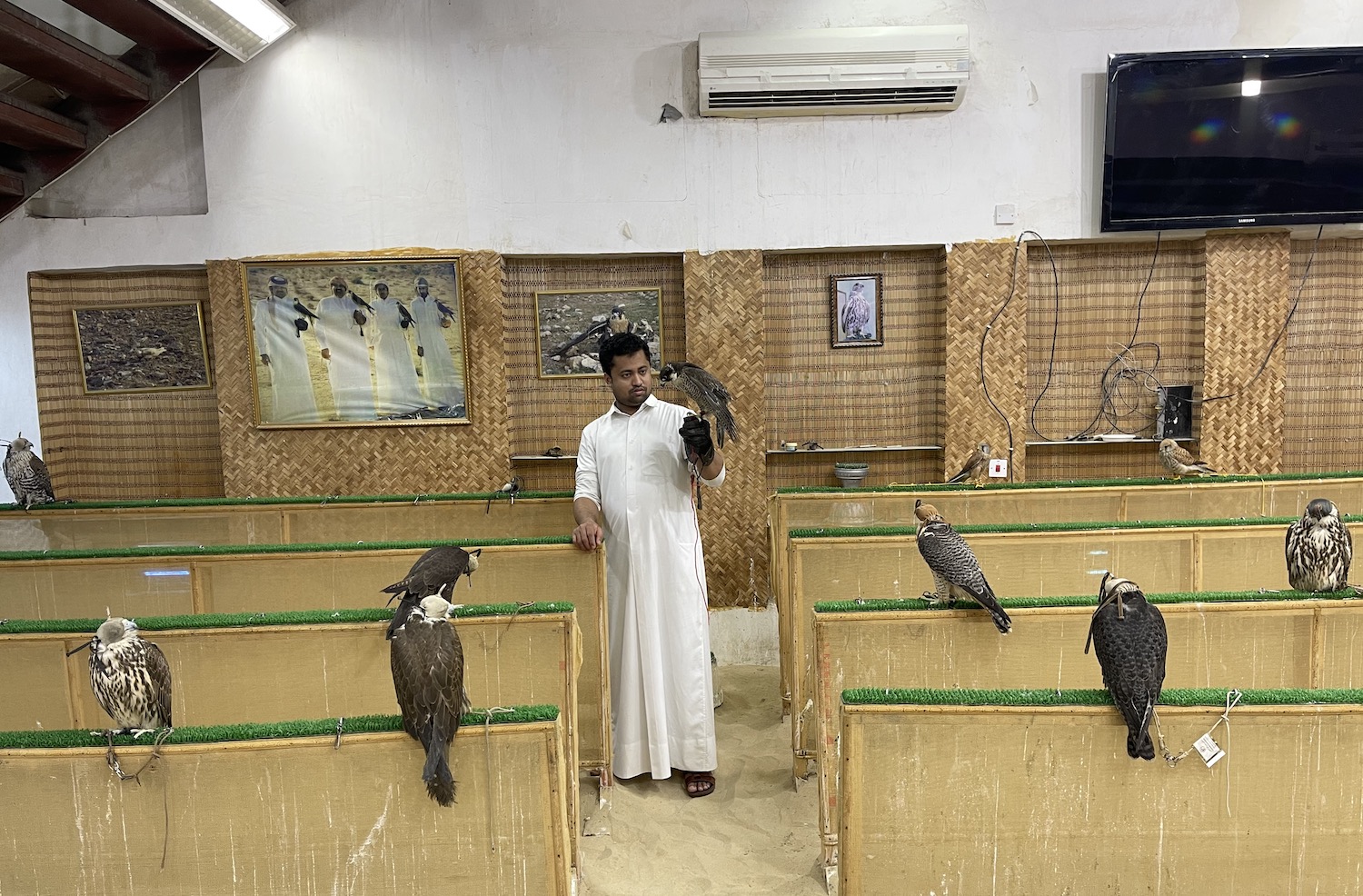
There are also sections of the souq for other animals, notably little birds and rabbits, crammed tightly into cages, and there is a nearby pen where several dozen camels are kept for parading on ceremonial occasions.
Also here is Al Koot fort, built in 1927 by Sheikh Abdullah bin Jassim Al Thani, who ruled Qatar from 1913 until 1949. It was designed as a base for forces to protect Souq Waqif from potential thieves.
Tucked into pockets around the souq these days are the eight Tivoli boutique hotels that are the best places to stay in the city and indeed the country. They share a couple of gyms and several pools as well as half a dozen restaurants, including Al Shurfa Arabic Lounge, which has an upstairs terrace with a good look down the Corniche to the West Bay skyline.
Although alcohol is largely restricted to the large hotels, which are also famed for the all-you-can-eat buffets that are so popular in this region, Qatar’s culinary arts have evolved significantly. Highly recommended restaurants around here include Shay Al Shoomos, an authentic little Qatari café run by the first woman to open a spice shop in the traditionally male trade at the souq, and Parisa, a Persian place full of sparkling walls and ceilings, with hidden alcoves and fancy balconies.
Away from the sea at the back of Souq Waqif is Msheireb, a brand new Downtown district following significant regeneration, location of a cluster of museums housed in elegant mansions as well as business hotels and restaurants glittering in contemporary architecture. The MGallery Alwadi here has a top floor overlooking Souq Waqif with an unbeatable vista. Also here are many highly renowned eateries, especially around Baraha Square, including a tea room by Harrods, a chain which these days is owned by the Qatar Investment Authority, and Saasna, which cooks up Qatari dishes with a modern twist.
Just in front of Souq Waqif, right on the Arabian Gulf, next to the Pearl Monument, is the dhow harbour. This is the place to jump on one of the many old wooden boats that do regular one-hour trips day and night around the shores for multiple perspectives on the West Bay skyline. Also here is the Al Shyoukh Terminal for half-hour boat trips out to Banana Island, a gated community with the luxurious eponymous Resort by Anantara that offers day passes to use its facilities.
There are plenty of good viewing points facing West Bay all along the waterfront, including by the FIFA World Cup monument, but my favourite is probably from the rattan easy chairs at the MIA Park Café, sticking out into the sea to the east of the dhows. This is beyond the grass that is usually teeming with South Asian men and Filipino women picnicking, near Richard Serra’s 7 sculpture, and before Box Park and the cruise ship terminal.
Around the corner to the east are two of the best Qatari restaurants in town. Bayt Sharq, spread around the enclosed courtyard of an old house, is the place for Qatari breakfast trays loaded with dozens of small dishes including shakshouka (eggs poached in sauces and spices), chopped liver, madrouba (mashed rice), and foul bean stew with fresh breads. And SMAT is where to find the signature dinner dish majbous al shuyoukh, slow braised tender beef with seasoned rice.
In this part of town there are three important cultural institutions located in stunning architectural creations that are often on the covers of the tourist brochures. Closest to Souq Waqif is the spiral-topped minaret of the Islamic Cultural Centre (known as Fanar, meaning lantern because of the way it lights orange at night). The Centre is aimed at non-Muslims and hopes to “open up the world of Islam to our guests”.
Sitting on its own artificial island is the geometric-shaped Museum of Islamic Art, designed by IM Pei. This has masterpieces from all over the Arabian Peninsula dating from the creation of Arabic calligraphy and the production of the earliest Qur’ans, and traces the development of Muslim art as Islam spread across North Africa and Central Asia.
Just after here are the 539 huge disks that interlock to comprise the National Museum, designed by Jean Noiuvel. This is structured like the petals of desert rose crystals, a kind of gypsum, that form in the Qatari desert. Outside is a sculpted garden and lake; inside the galleries run through the natural history of the region, and present the official story of the emergence and development of the country. It also has Jiwan, a fine-dining Qatari place where the lamb madrouba and the roast quail are almost as good as the views from the terrace.
Back at Souq Waqif, heading west are the Clock Tower historical landmark, the Al Shouyoukh Mosque, and the Amiri Diwan rubber-stamp government building, flying the national flag of Qatar (which is all but identical to the national flag of Bahrain). Be warned that they are not keen on you taking photographs around here so be ready for the police car permanently parked on the driveway to flash its lights and toot its horn if you get too close.
From here begins the 7-kilometre Corniche that sweeps around the deep curve of the shore, with cycling and jogging lanes backed by a series of green parks, one of which was the site of the fan festival during the World Cup. Obviously, there are spectacular panoramas all the way along, though the best of them is undoubtedly from the top of the Ned hotel and private members’ club that houses seven restaurants in the grand old former Ministry of Interior building.
West Bay itself has been on the drawing board since the mid-80s, though several buildings were still receiving their finishing touches even as the curtain raised on the World Cup. The first major development was the pyramid-shaped Sheraton Hotel, which opened at the far end of the Corniche in 1979. Since then, iconic skyscrapers, including the 238m-tall condom Burj Doha and the 241m-high spaceship World Trade Centre, have sprouted along the waterfront to form the business district of Doha, which naturally comes with luxurious sleeping, dining and shopping opportunities. The skyline looks good all day but positively electric at night.
The West Bay shops are in the City Centre Doha Mall and the Gate Mall. The fine dining is in the major hotels and includes renowned international brands Hakkasan (in the St Regis), La Mar (InterContinental), Nobu (Four Seasons) and Market by Jean-Georges as well as popular but tacky Friday brunch specialist Spice Market (both in the W). Also around here there are loads of colourful bikes (Ooredoo) and electric scooters (Falcon) for hire.
Almost 10km up the coast is Katara Cultural Village. Katara is the ancient name for Qatar and this is an odd theme-park full of mudbrick shops (there is a massive Galeries Lafayette and there are high-end boutiques on 21 High Street), public art (of particular note are Gandhi’s Three Monkeys by Subodh Gupta and The Force of Nature II by Lorenzo Quinn), cultural institutions (there is an open-air amphitheatre and the Opera House is home to the Qatar Philharmonic) and mosques (the Golden Mosque is glittering and the Blue-tiled Mosque was most unusually designed by a female architect, Zeynep Fadilloglu). It is pleasant to walk under the brown canvas awnings and in the heat free-to-use golf cart taxis move visitors about. All of this faces onto the only public beach in Doha, which is lined with thatched kiosks selling tourist tat and offering kitesurfing, parasailing and wakeboarding.
At the far end, Boho Social has a lovely terrace with 180° views over the ocean all the way from West Bay to The Pearl. And up the hill is the acclaimed Bayt El Talleh Levantine restaurant.
The Pearl, just beyond the Chedi hotel and the Marsa Katara restaurant, is an enormous artificial island 350m offshore. On the mainland near the start of Pearl Boulevard Bridge are several business hotels, the most notable of which is the Mondrian because it houses the Cut by Wolfgang Puck.
The Pearl currently spans almost 4kms2, stocked with accommodation, dining and shopping targeted at foreigners. However, it will soon add more than 30km of coastline to the city. The most eye-catching section is the Qanta Quarter at its west end, which apes Venice with 1.6km of canals and copycat buildings and bridges. It also has several small beaches.
The rest of The Pearl is mostly made up of three contiguous almost circular bays. Two are largely residential and the main one for visitors is Porto Arabia, which has a large marina of motor-boats and a row of cafes and restaurants wrapped around the island in the middle hosting the St Regis. The best eatery here, with a Michelin starred chef and also the only one licensed to sell alcohol, is Shirvan Métisse. From Gate 23 it is possible to hire kayaks and stand-up-paddles as well as charter small boats for 40-minute tours of the area.
A little north of The Pearl is the horseshoe-shaped Katara Twin Tower. This is billed as an iconic architectural translation of Qatar’s national seal, representing traditional scimitar swords, and it is certainly spectacular. On one side is the “six star” Raffles and the other the humble five-star Fairmont.
Just beyond here is more artificial land, this time a peninsula, the rather more chichi Al Maha. Opposite Lusail Marina, this is a strip of uber cool places, though oddly with a Winter Wonderland stuck on the end. Standouts include international restaurant staples Carbone, LPM, Tatel and Zuma as well as Bagatelle beach club and Billionaire nightclub.
Lusail is also home to the International Circuit, which hosted Qatar’s first Grand Prix, in 2021. A deal has since been done for races from 2023 for the following ten years.
And Lusail Stadium, near the gorgeous purple Lusail Towers, hosted the World Cup Final in 2022. This was on Qatar National Day, 18 December, the last of sixty-four matches played over twenty-eight days that attracted one million visitors. Despite all the controversy in the Western media, it was widely acclaimed as a magnificent tournament and the greatest World Cup Final ever. This is where Lionel Messi truly joined the pantheon after Argentina beat France on penalties. The largest of the eight specially-constructed arenas with a capacity of 80,000, which will eventually be reconfigured to 40,000, the design is based on the decorative motifs found on ancient Arabic crockery and lanterns. Its picture is on the 10 riyal banknote.
Rest Of Qatar
Almost – but not quite – everything of importance in Qatar is in Doha. However, there are some intriguing attractions in the rest of the country, which is only 160km north-south and 90km east-west. To get at them, there are two routes – north and south – that can each be driven in a day, though be under no illusion: these are certainly roads less travelled.
The South
Heading south, beyond the outskirts of Doha you will soon pass vast compounds containing grey pre-fab accommodation and rows of colourful buses for the migrant workers, mostly from south Asia, who have been building and operating the capital.
The first stops going south are 20km down the coast at the ancient pearling villages of Al Wakrah and Al Wukair. Al Wakrah has benefited from significant investment in its tourist facilities making it a pleasure to wander the maze of the souq, another place fit for Hollywood, abutting the pedestrianised Corniche shoreline, full of cafes and restaurants facing the busy beach. At one end is the gigantic Pearl Monument and at the other is another excellent Tivoli boutique hotel.
Twenty minutes further on is a very different kind of place: Mesaieed is famed locally for its enormous industrial complex that is visible from the road. This city was founded from nothing in the 1940s by the QatarEnergy corporation when it built the country’s most important deep water tanker terminal here and then put a massive refinery for oil and gas right next to it. It may be ugly, but without it Qatar would not exist as it does today. After Russia and Iran, Qatar has the world’s third largest reserves of natural gas, mostly from the massive offshore North Field, which covers an area almost the assize of Qatar itself. It is the world’s largest exporter of liquified natural gas and has the equivalent of 600 times its annual consumption, which means that if it stopped exporting, at current consumption rates it has enough to last until the year 2600.
However, Messaieed is also the start of a 30km long stretch of sand dunes that are really quite pretty. Most of the desert in Qatar is scrubby, but for about an hour from here it is possible to drive through a gorgeous rolling sandscape, the only area of classic dunes in the whole country. This is the beautiful home of the Arabian Oryx (the national animal, which features on the Qatar Airways tail logo), Fennec Foxes, scorpions and snakes.
It is easy to get lost and/or stuck so you may prefer to arrange to go in convoy or even book a 4-6 hour tour with a guide from any of the major hotels in Doha. But if you do take it on you need to deflate the tyres on your 4×4 (from 2.4 to about 1.2 bar) and carefully follow the most deeply rutted tyre tracks, though there are hundreds and hundreds of them shooting off in all directions.
The tracks start near the Sealine Beach Resort, popular with expats escaping the big city and home of the Saudi football team during the World Cup. Also around here are several makeshift campsites, a camel trekking centre, and a huge quad bike hire place.
At the other end of the tracks, in the very south-east corner of Qatar, with Saudi Arabia visible over the nearby border, is Khor Al Udaid, known as the Inland Sea. This tidal inlet of the Arabian Gulf is about 15km long and 12km wide at high water, though it shrivels to very little when the tide goes out. Once a haven for pirates, and heavily contested ground between local tribes, Sheiks from Saudi Arabia and Emirs from Abu Dhabi as well as Ottoman and British imperialists, it is now a nature reserve popular with locals.
There is some diving around here through any of half-a-dozen operations in Doha; there are small patches of reef near the shore as well as some boat wrecks. Above all, it is a good place for swimming and camping before returning to Doha.
The North
The clockwise northern circuit starts by heading west from Doha on the Dukhan Highway. Within half-an-hour, this goes past Al Wajba village. The fort here, built in 1893, was the scene of an important battle that year when the army of local tribal leader and founder of the state of Qatar Sheikh Jassim bin Mohammed Al Thani defeated the Ottomans; it was later the home of various royal family members. These days, Al Wajba Palace houses the former Emir, Sheikh Hamad bin Khalifa Al Thani, known as the Father Emir, who ruled from 1995 until he abdicated in 2013 in favour of his fourth son, Sheikh Tamim bin Hamad Al Thani. Sadly, both the fort and the palace are locked behind secure gates.
Not far past the huge Mall of Qatar, which has more than 500 shops, is the Al Shahaniyah Camel Racing Track, the only one in Qatar. Races tend to take place in winter over various ten-day festivals when they are usually run either first thing in the morning or late in the afternoon, when it is a little cooler. It is free to watch and welcoming of spectators, though there are rarely any at all. It is hard to confirm exact timings but it is worth just turning up on the off-chance when the website suggests a festival is on, not least because they seem to have practice sessions more or less all day every day, and there are always thousands of camels being shepherded along the roads to and from the track from all around, which is quite a sight in its own right.
The course is an 8km loop that starts near the mosque and ends in front of the grandstand. You can wander around the paddock while the owners saddle up the robot jockeys that replaced child jockeys back in 2005, and then watch the races on several large screens. However, here is also the rare chance to drive alongside the twenty or so camels as they run, in a peloton of fifty or more cars, including the TV van and those containing the robot controllers who are cracking the whip.
Dukhan itself, about an hour in total coast-to-coast from Doha, is owned by QatarEnergy, which has its headquarters here, and to enter the city you need a permit from them. This is where oil was first struck, in 1939, and the first oil well built, in 1940. Qatar has proven reserves sufficient to last another 400 years.
As you can clearly see when you fly in and out of Doha, the rest of the country is a big flat sand pit. The only exception is the low lying limestone escarpments at Zekreet, on a large inlet halfway up west Qatar. Carved into beautiful shapes by the wind, these rock formations are easily explored by 4×4. Nearby are the ruins of Zekreet fort, close to where the desert sand turns into beach sand (identifiable only because there are two or three permanent thatched parasols) on a coastline that attracts locals for kite- and wind- surfing.
Only 5km on a sandy track north of Zekreet is the first of two acclaimed and massive art installations almost hidden in the desert. Here are the four towering steel plinths, spread along 1,000m, that form the renowned East-West/West-East sculpture by Richard Serra, built in 2014.
Just 2km out to sea off the Ras Abough Peninsula are the uninhabited Hawar Islands. Only one of these – Janan – is Qatari; the rest have been Bahraini since they were first surveyed in the 1820s. Bahrain has long been planning to build a 23km bridge to Qatar via the Hawar Islands so the entire region would be linked by road. However, the project has stalled thanks to the Saudi boycott of Qatar that Bahrain supported so right now you have to take a boat from Bahrain and there is no access at all from Qatar.
It is an hour up the coast from Zekreet to the small villages of Zubara and Murair. Settlements around here date back to the ninth century and grew prosperous in the eighteenth century through pearl fishing and spice trading when they were ruled by the Al Khalifas from Kuwait who later expanded into Bahrain. However, in the late nineteenth century Zubara was largely destroyed and Murair abandoned following military skirmishes with the British and the Ottomans. Once the Al Thanis assumed control of Qatar, the Emir, Sheikh Abdullah bin Jassim, founded a fort at Zubara to protect the area from all these invaders. That fort, dating from 1938, has been beautifully restored and is now the only UNESCO World Heritage Site in the country.
Only 5km north of Zubara is the other important artistic statement here in the desert, Olafur Eliasson’s wonderful Shadows Travelling On The Sea Of The Day, created in 2022.
From here it takes half an hour to reach the very tip of Qatar. This is where you will find the Zulal Wellness Resort By Chiva-Som, a superb spa where the highlight is the arctic cave.
It is just 20 minutes from Zulal heading south-east to the scrubby beach at Fuwairit for a swim, and another 45 minutes down the east coast to the mangrove swamp at Al Thakira for some kayaking. The nearby town of Al Khor has a lovely corniche with a large harbour of dhows, along with the Al Sultan Beach Resort, where the Al Dente restaurant is a great place for a mezze and a shisha with your feet in the sand.
Al Khor is also home to the 60,000-seater Al Bayt Stadium, which hosted the Opening Ceremony of the World Cup in 2022. It has a celebrated unique design with a retractable roof inspired by the traditional tents of local nomadic peoples. Heading down the coast, it is 50km to complete the loop back to Doha.

